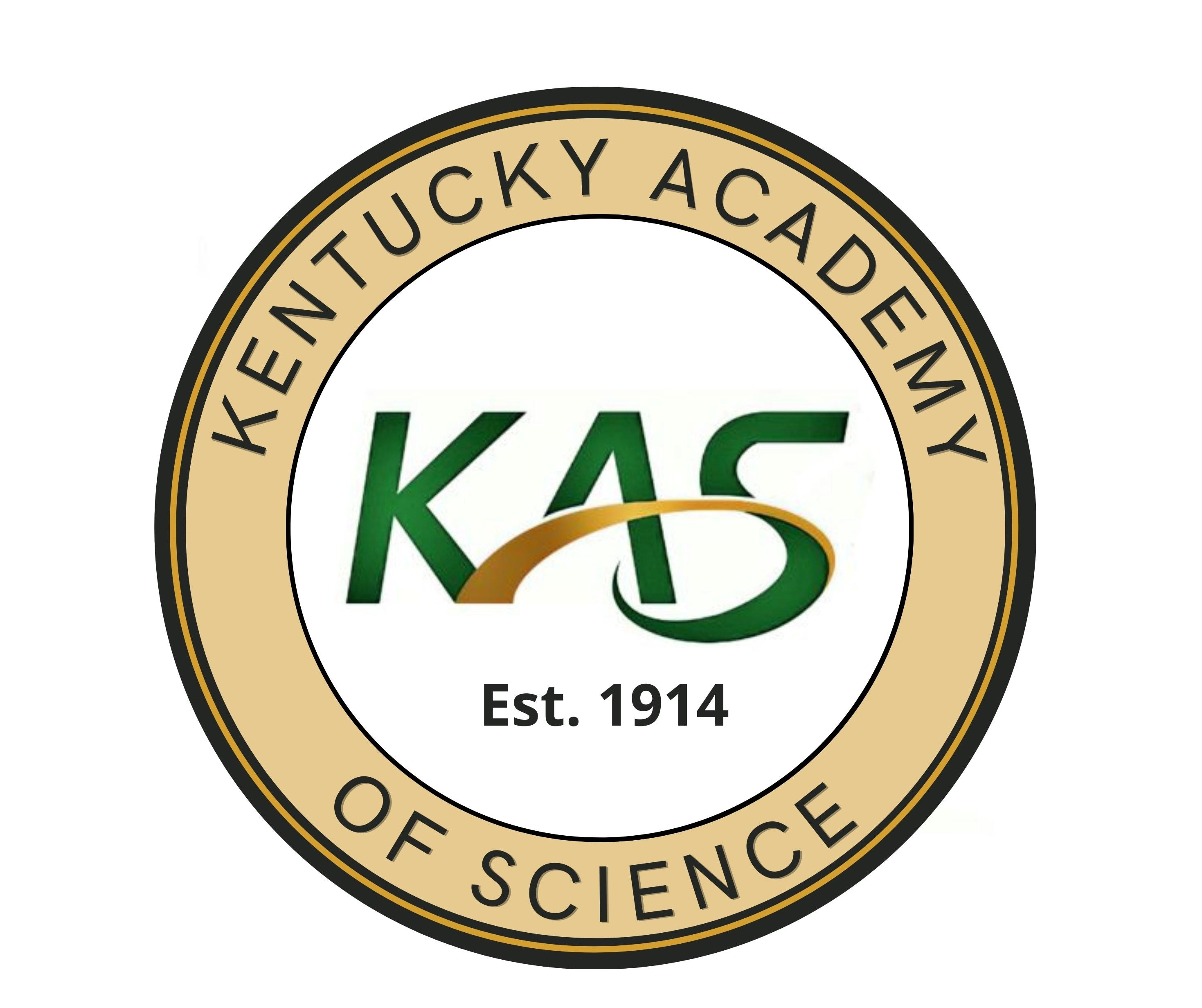Bench Talk Live
KAS Presents Bench Talk Live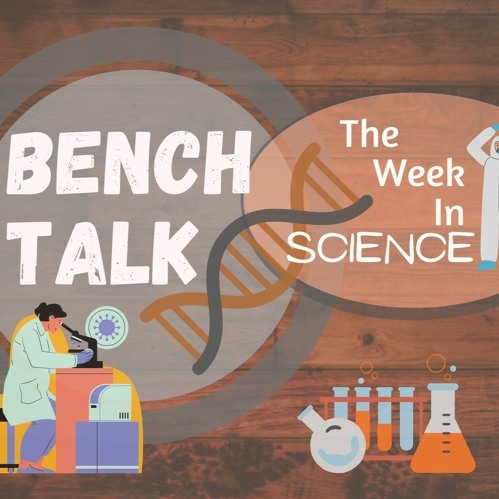
KAS is collaborating with Bench Talk: The Week in Science, a weekly radio show & podcast produced by KAS members, to bring you a live monthly online program.
World Diabetes Day 2023: What do I Risk If I Don't Know the Risks
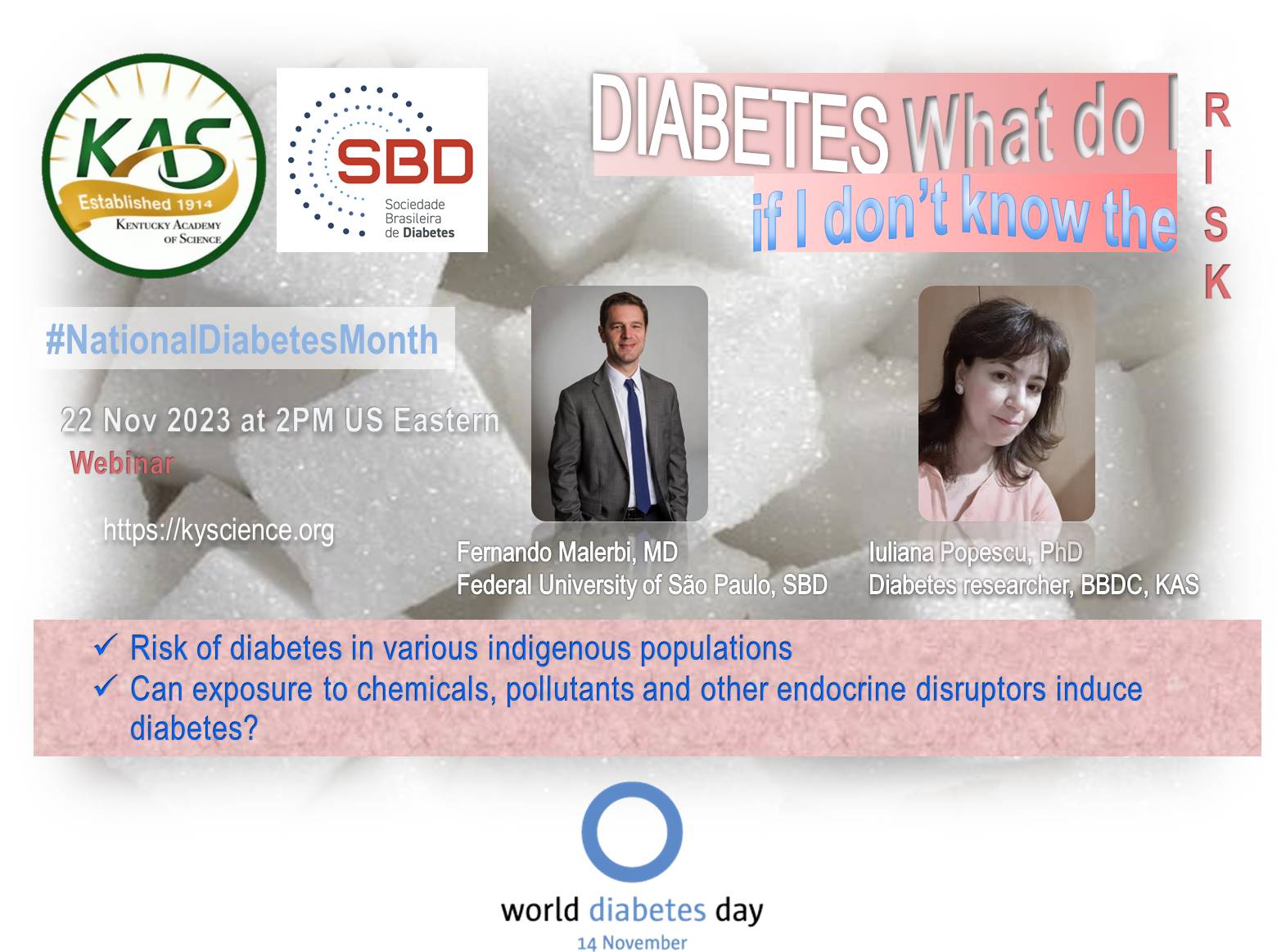
November 22, 2023
Dr. Fernando Malerbi and Dr. Iuliana Popescu
Watch the Recording
Kentucky Heritage Land Conservation Fund
October 13, 2023
Dr. Shannon Galbraith-Kent serves as KAS' representative on the Kentucky
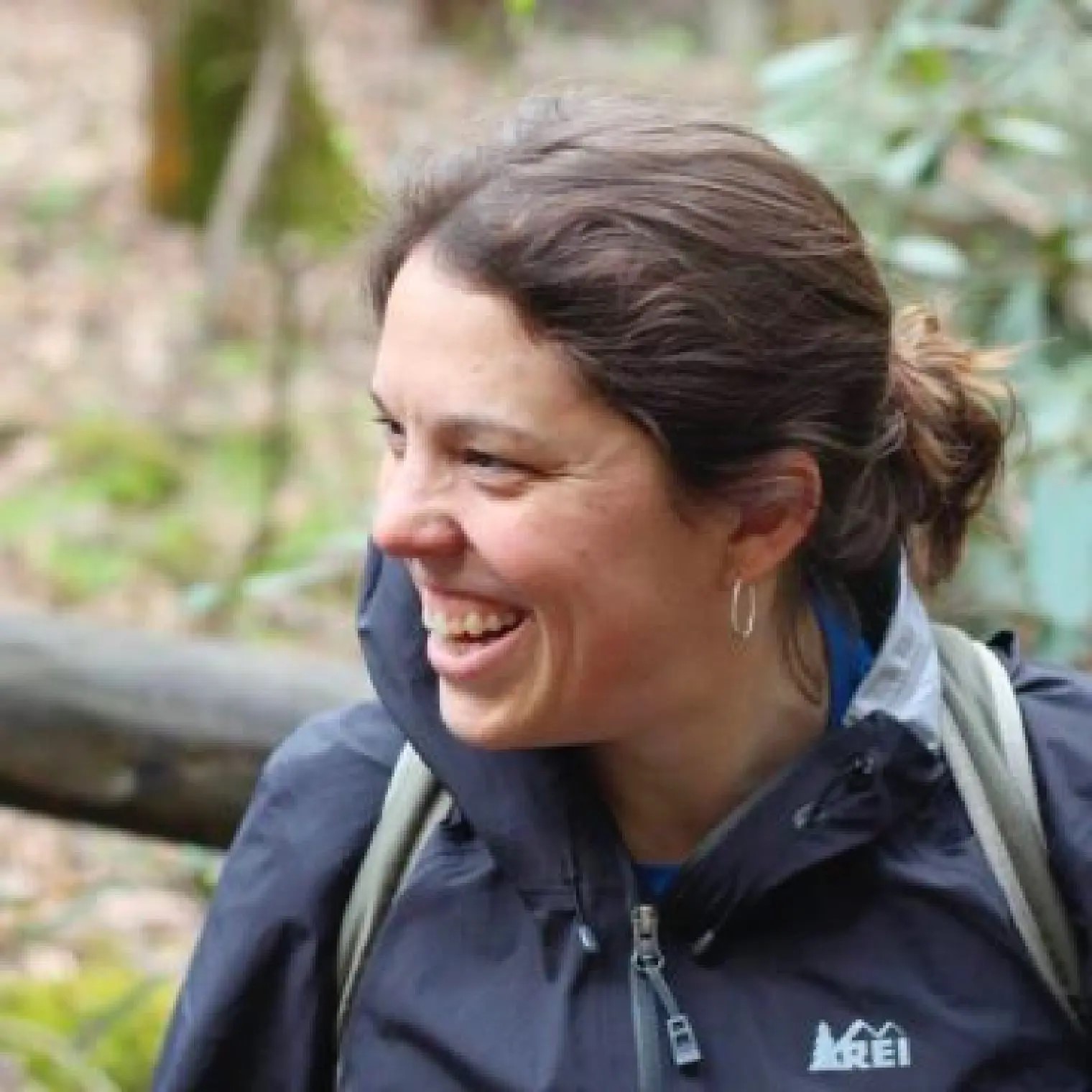 Heritage Land Conservation Fund board. Find out more about how the Fund can protect land in Kentucky for conservation & education, and how scientists, educators, and conservation advocates can support this mission
Heritage Land Conservation Fund board. Find out more about how the Fund can protect land in Kentucky for conservation & education, and how scientists, educators, and conservation advocates can support this missionWatch the Recording
Geology of the Ordovician High Bridge Group, Friday, May 20, 2023 Watch the Recording
This program is a partnership with the Geological Society of Kentucky
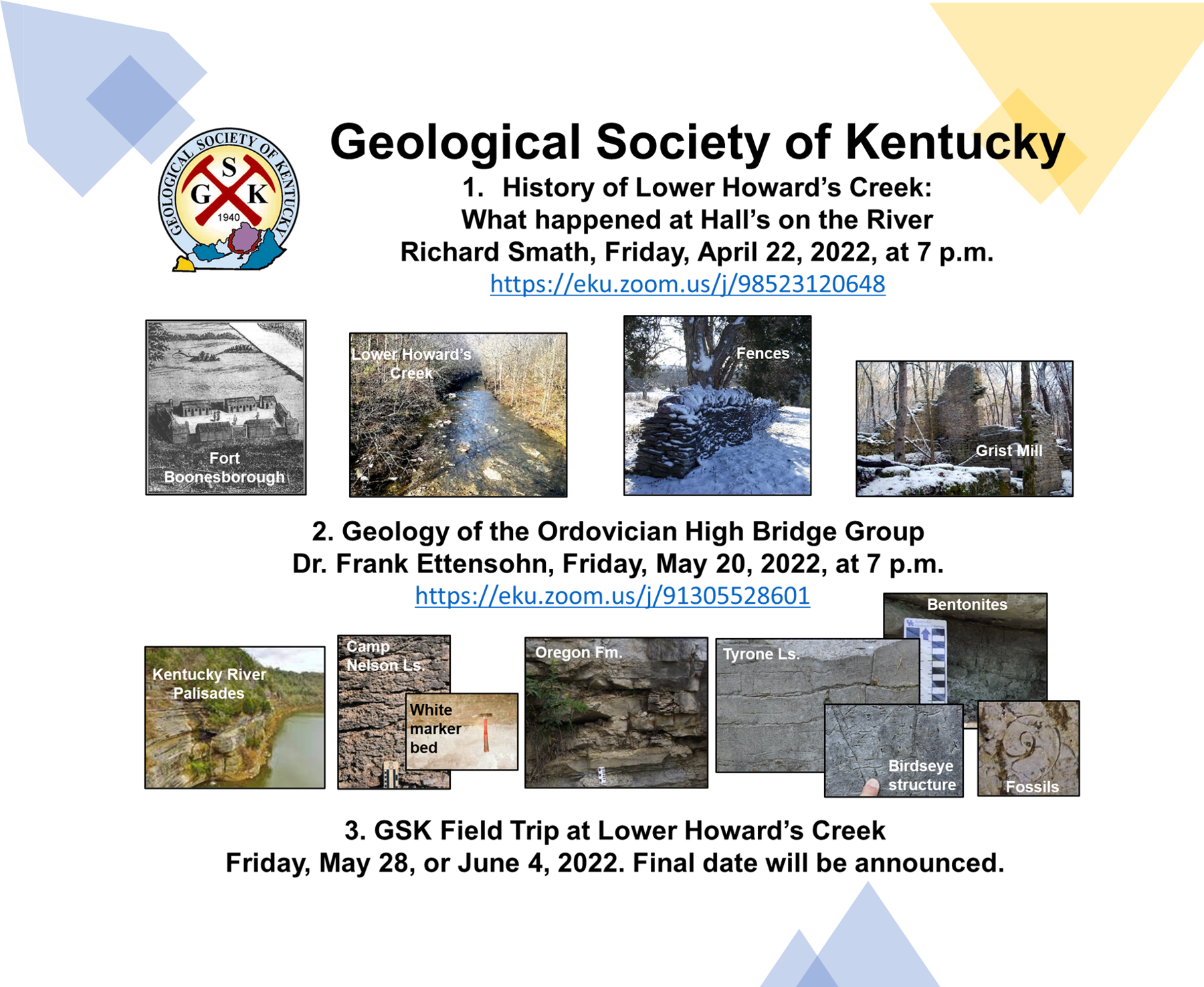
Presenter:
Dr. Frank Ettensohn
Surveilling COVID-19: From pop-up testing sites to wastewater tests, Monday, May 9, 2023 ET
Watch the Recording

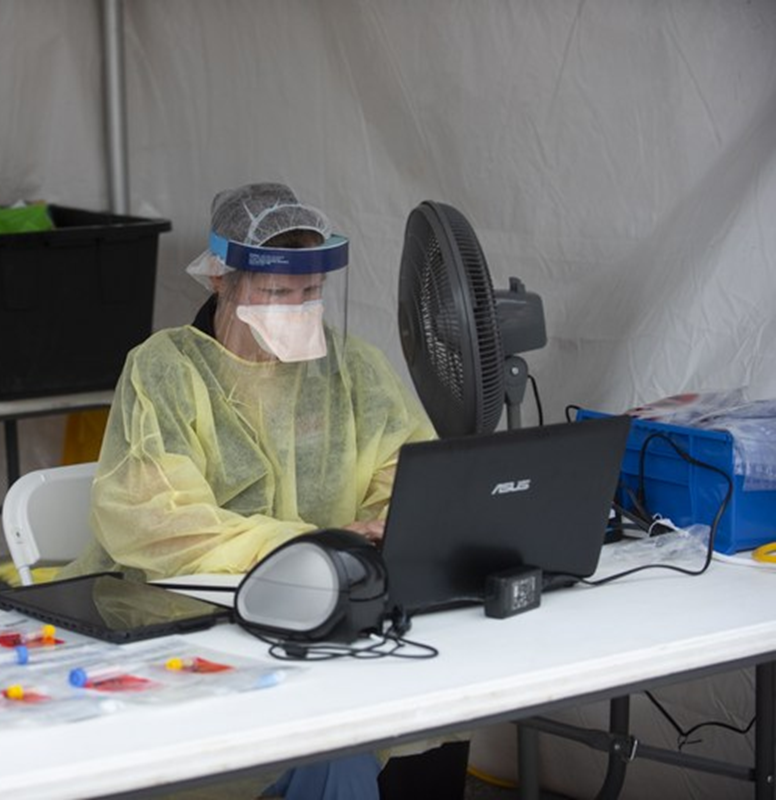
COVID-19 has made many researchers, scientists and health officials more adaptive than ever. Rachel Keith spent most of her career in preventive cardiology, but much of her focus in recent years has been on protecting people from COVID-19. She’ll share what she has learned from her experiences in pop-up testing sites and on the front lines of the pandemic. She’ll be joined by her Evirome Institute colleague, Lauren Anderson, who will discuss how wastewater testing serves as an early warning system when COVID-19 is spreading in a community. Wastewater testing is what tipped off Louisville officials when the BA.2 variant of omicron coronavirus arrived in the area and helped prompt a quick reaction.
Rachel Keith is an Associate Professor of Medicine with the Division of Environmental Health and the Director of Human Subject Services with the Envirome Institute at the University of Louisville. Her research program combines her diverse skill set in basic sciences, nursing, community participatory research and clinical studies. For most of her career she has practiced part time in a preventive cardiology clinic, focusing on researching how environmental exposures impact health outcomes, targeting prevention of cardiovascular disease and novel identifiers of early disease. Since 2020 she has expanded her research to COVID-19 and Long Covid. The environment can be made up of many things including lifestyle choices such as physical activity, tobacco use, and diet choices, workplace psychosocial metrics, as well as exposure to inhaled compounds such as air pollution or biotics like Sars-CoV02. Though genetics plays a role in susceptibility of individuals to disease, a larger portion likely comes from the environment. Her research uses tools for evaluating perceptions of residential and workplace exposures, physical and mental health and risk, cardiovascular health, metabolic health, exposure to hazardous chemicals, greenness exposure, e-cigarettes, and biomarkers of injury. She has participated and managed numerous clinical trials and NIH or industry sponsored investigator initiated human studies, as well including enrolling over 2000 local participants in environmental studies and 15000 in COVID studies. She is establishing how the environment influences both disease and the perception of risk has many policy and regulatory implications. Rachel received a B.A., B.S.N., M.S., M.S.N. and Ph.D. from the University of Louisville. She is a board certified Adult nurse practitioner with post-graduate training as a tobacco regulatory fellow with the American Heart Association and a certified tobacco treatment specialist.
Lauren Anderson holds a master’s degree in Public Administration from the University of Louisville and is a Research Management Professional. As a Program Manager for the Envirome Institute and Center for Healthy Air Water and Soil, Lauren specializes in leading collaborative teams through community-facing projects and clinical trials. Lauren has a particular interest in project communication and research translation with a focus on environmental and wellbeing research. She is a part of the Green Heart and Co-Immunity Projects at the Envirome Institute. Lauren has managed portfolios for the Institute for Healthy Air Water and Soil, a Louisville-based environmental nonprofit, the Louisville Metro Department of Public Health and Wellness. Prior to joining Public Health, Lauren worked for Louisville Metro Community Services and received her Bachelor of Arts from Transylvania University in Lexington, Kentucky.
Microplastics, Monday, May 2, 2023
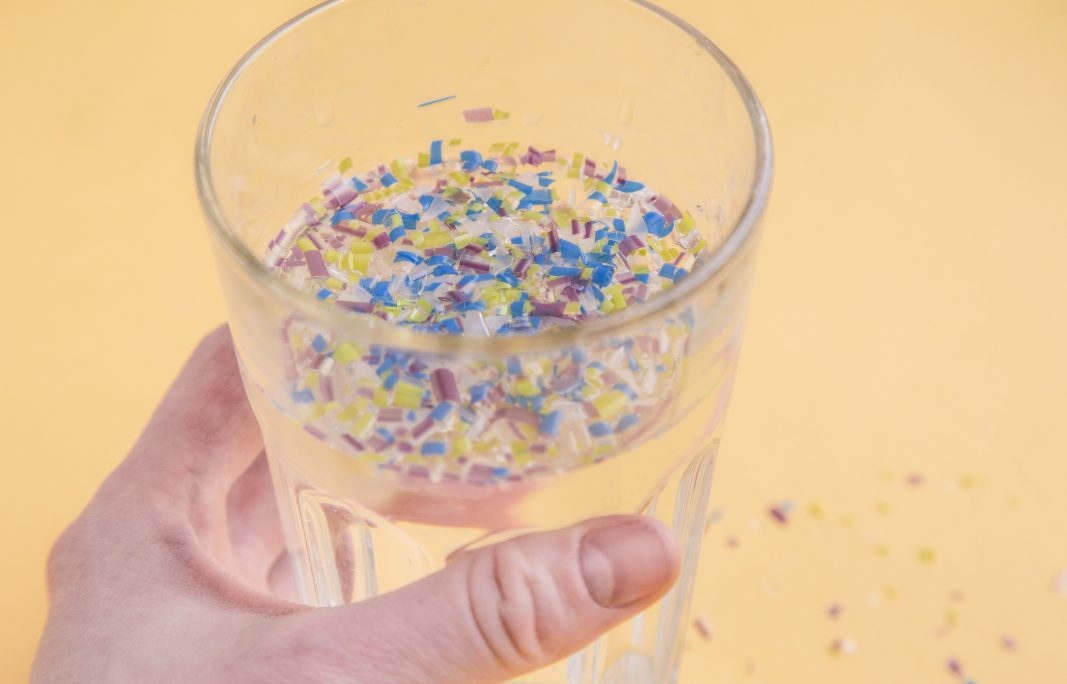 Tune in to learn more from local researches about the current state of the science around Microplastics.
Tune in to learn more from local researches about the current state of the science around Microplastics.Find out more about how we study them, how widespread they are, and what the impacts may be.
Watch the Recording
Presenters:
Idoia Meaza Isusi, University of Louisville
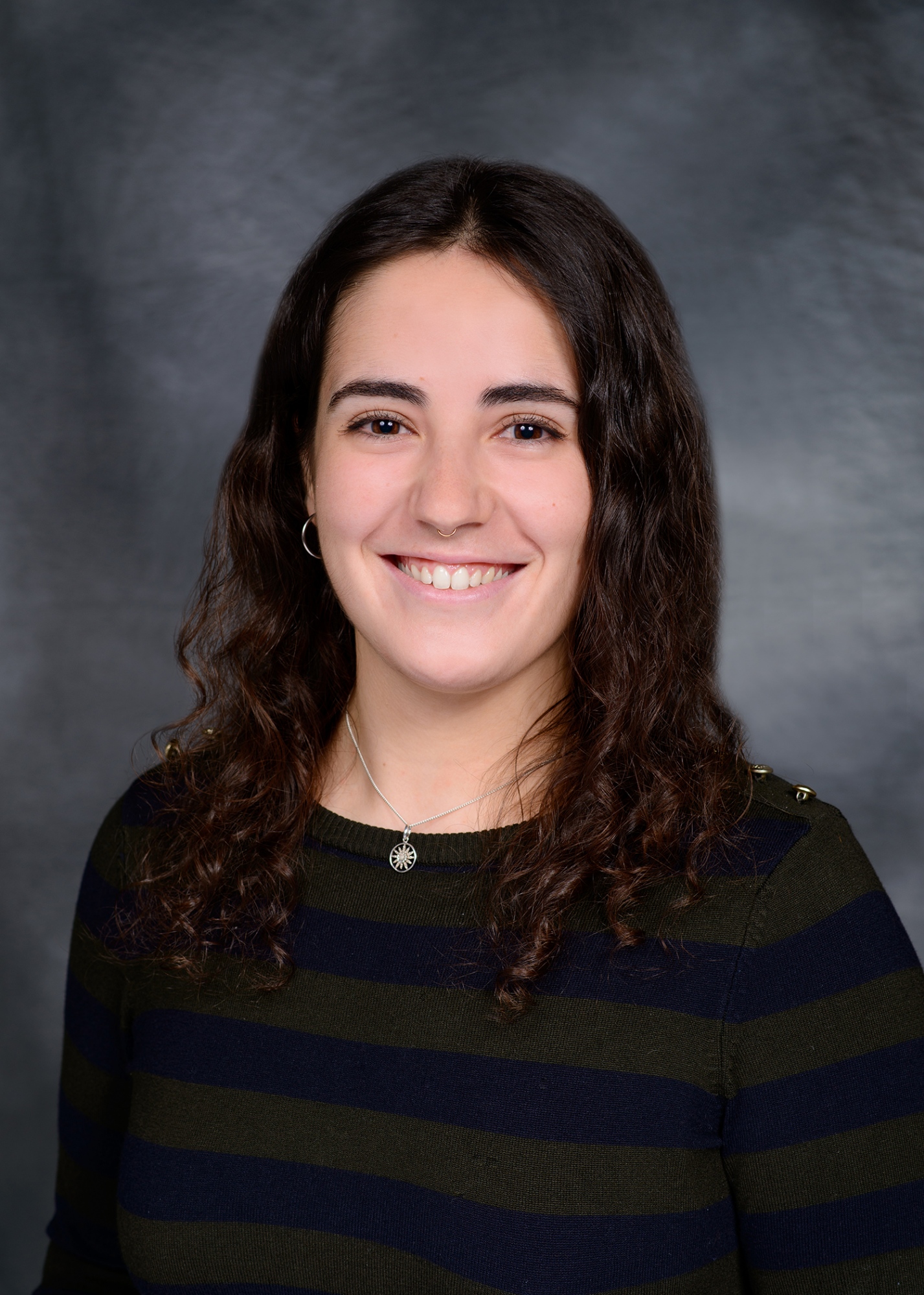
Microplastics are everywhere, from our food, drinks, isolated places in the globe, the air and even in our blood. Microplastics, as the name describes, are tiny pieces of plastic - 5 mm in size or smaller. There are lots of different kinds of microplastics due to the large variety of materials used to make them and there is great variation in their physical and chemical properties, such as concentration, material type, shape, color, chemical additives etc. Adding to the complexity, other pollutants such as metals can stick on the surface of microplastics, making them even more hazardous and very difficult to study. Recent papers on the presence of microplastics in human blood and feces has raised two main questions: what kind of microplastics are we exposed to? and how are we exposed them? This talk will tackle these two questions.
Phillip Potter, Environmental Protection Agency
Plastic pollution is a growing environmental concern. Microplastics (MPs) are < 5mm and are particularly hazardous due to their high surface area to volume ratio that facilitates leaching of their inherent additives and allows them to be efficient vectors for toxic metals and persistent organic pollutants. The presence of MPs in urban watersheds has been documented but information on sources, transport routes, and fate are lacking. The shortage of systematic studies of freshwater and urban watershed systems is a critical research gap because estimates of plastic release into these systems are much higher than those for marine systems. As most plastic pollution originates in urban environments, studies of urban watersheds with high population density and industrial activity are especially relevant.
Nanotechnology in Kentucky, Thursday Feb. 24, 2022, 2023
Find out about the NSF funded research partnership between UK and U of L and the National Nanotechnology Coordinated Infrastructure (NNCI)
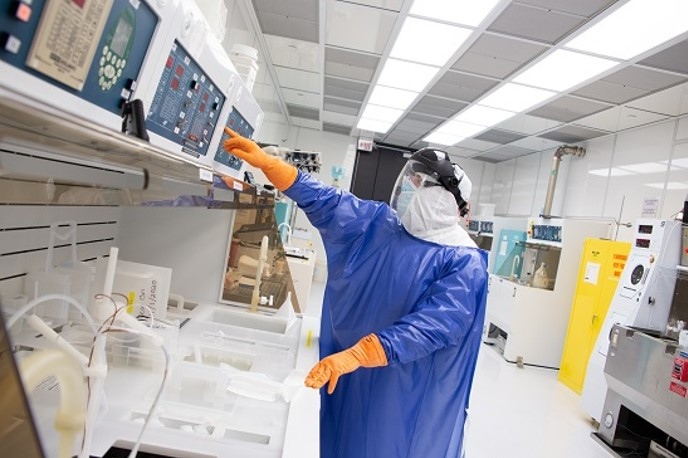
Watch the Recording More photos from the U of L Micro/Nano Tech Ctr
Presenters:
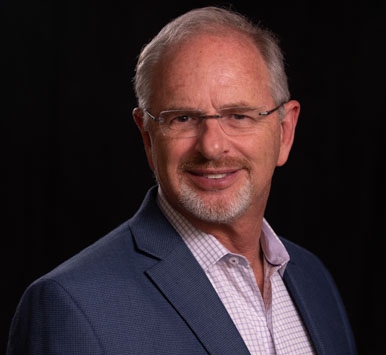
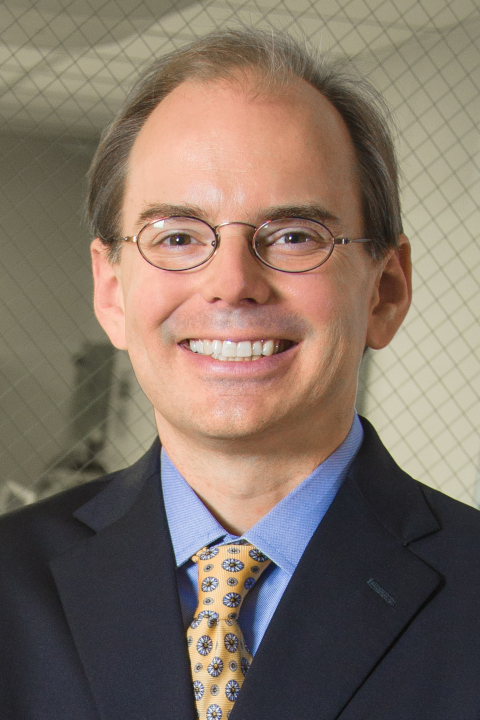
Dr. Kevin Walsh, University of Louisville "The KY Multiscale NSF NNCI Node – What is it and How can it Help You?" Dr. Walsh's Slides
Dr. Todd Hastings, University of Kentucky "KY Multiscale: Helping Researchers, Educators, and Industry”
The NSF NNCI Kentucky Multiscale Site is a collaboration between the University of Louisville and the University of Kentucky focused on integrating nanotechnology with the latest advances in additive manufacturing to enable scientific discovery, create new products, explore new application spaces, and train our next generation of scientists and engineers. With nanotechnology now integral to scientific discovery and applied engineering, there is a pressing need for state-of-the-art infrastructure that supports the rapid and effective prototyping of nano-scale devices in macro-scale systems. The goal of KY Multiscale is to combine micro/nano fabrication processes with emerging advanced manufacturing technologies, such as additive manufacturing, aerosol jetting, and two photon 3D printing, to provide researchers with the complete toolset needed to explore nanotechnology solutions to real-life problems in critical areas such as healthcare, energy, the environment, communication, and security. KY Multiscale is the first open-access user facility nationwide with a focus on three-dimensional micro/nano fabrication and true multi-scale integration. Users of KY Multiscale have access to design, simulation, and fabrication resources that span the nanometer to meter scales, and the expertise to effectively integrate these processes. KY Multiscale also provides a wide variety of educational training and outreach activities to engage current students and inspire our nation’s next generation of budding scientists and engineers with an emphasis on increasing participation from under-represented populations.
Wednesday, January 26, 2022
Kentucky Geology in 1 Hour or Less
Do you think you found a meteorite in your backyard, or an ancient dinosaur fossil?
Well... the Kentucky Geological Survey are the people who can answer your geology questions. You won't want to miss this chance to talk to expert geologists!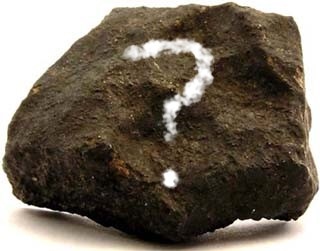
Doug Curl and Sarah Mardon from the Kentucky Geological Survey will tell us how to get our burning geology questions answered, and show us how to use amazing FREE online maps to discover local rock layers, groundwater, and other natural resources. It's a fast class in Kentucky Geology! How far away can our Ky seismographs detect earthquakes? Click here to find out)
Watch the Recording Contact the KGSWell... the Kentucky Geological Survey are the people who can answer your geology questions. You won't want to miss this chance to talk to expert geologists!

Doug Curl and Sarah Mardon from the Kentucky Geological Survey will tell us how to get our burning geology questions answered, and show us how to use amazing FREE online maps to discover local rock layers, groundwater, and other natural resources. It's a fast class in Kentucky Geology! How far away can our Ky seismographs detect earthquakes? Click here to find out)
Doug Curl has been employed with the Kentucky Geological Survey since 1998 and is curre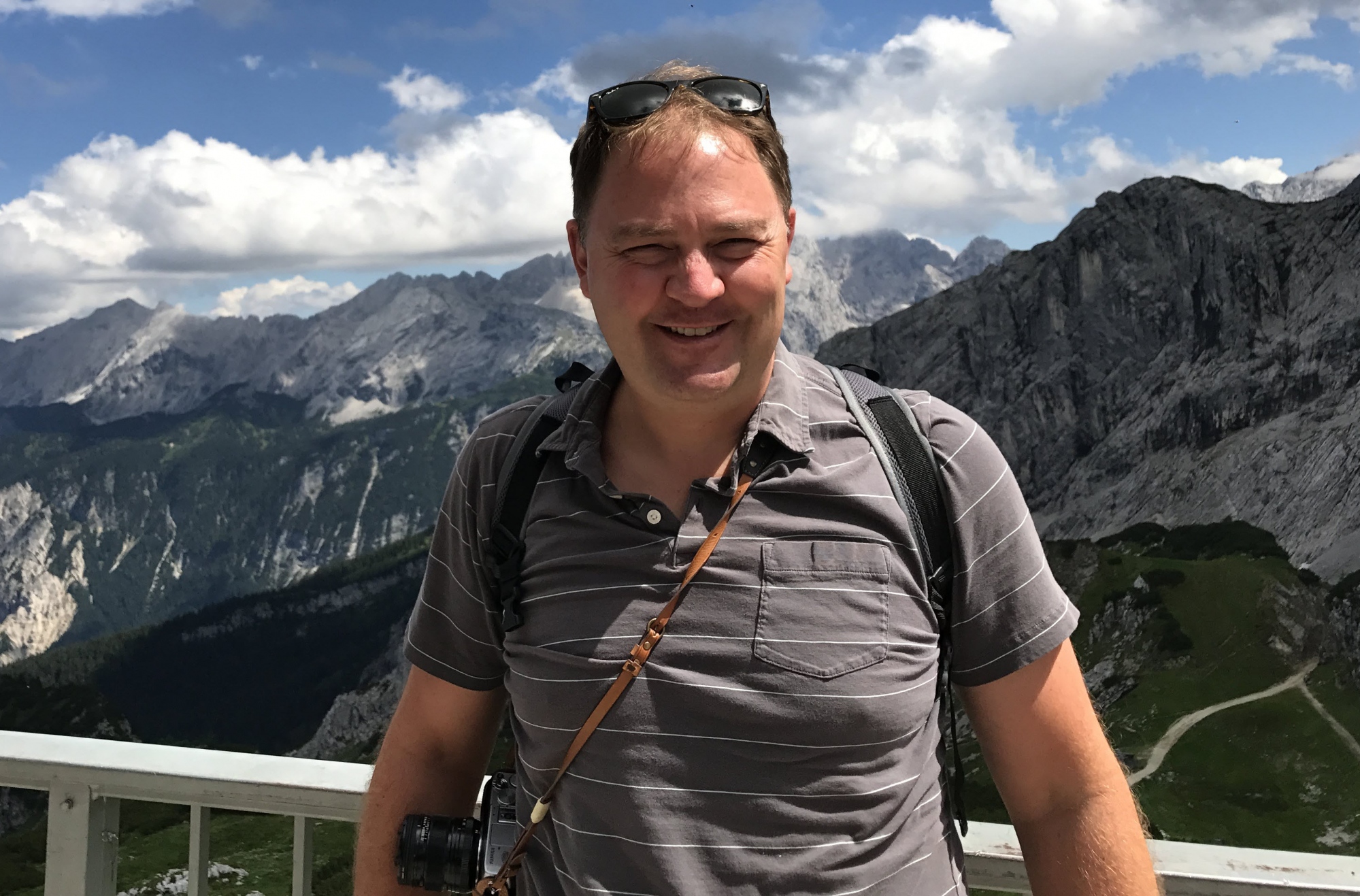 ntly head of the Geoscience Information Management section. He has a Master of Science degree in geology from the University of Tennessee, Knoxville, and a Bachelor of Science degree in geology from Guilford College in Greensboro, NC. His primary work interests are delivering geologic data to the public through web applications, GIS application in geoscience, and structural geology and geologic mapping. Doug enjoys cycling, camping and hiking with his family and friends, and playing guitar.
ntly head of the Geoscience Information Management section. He has a Master of Science degree in geology from the University of Tennessee, Knoxville, and a Bachelor of Science degree in geology from Guilford College in Greensboro, NC. His primary work interests are delivering geologic data to the public through web applications, GIS application in geoscience, and structural geology and geologic mapping. Doug enjoys cycling, camping and hiking with his family and friends, and playing guitar.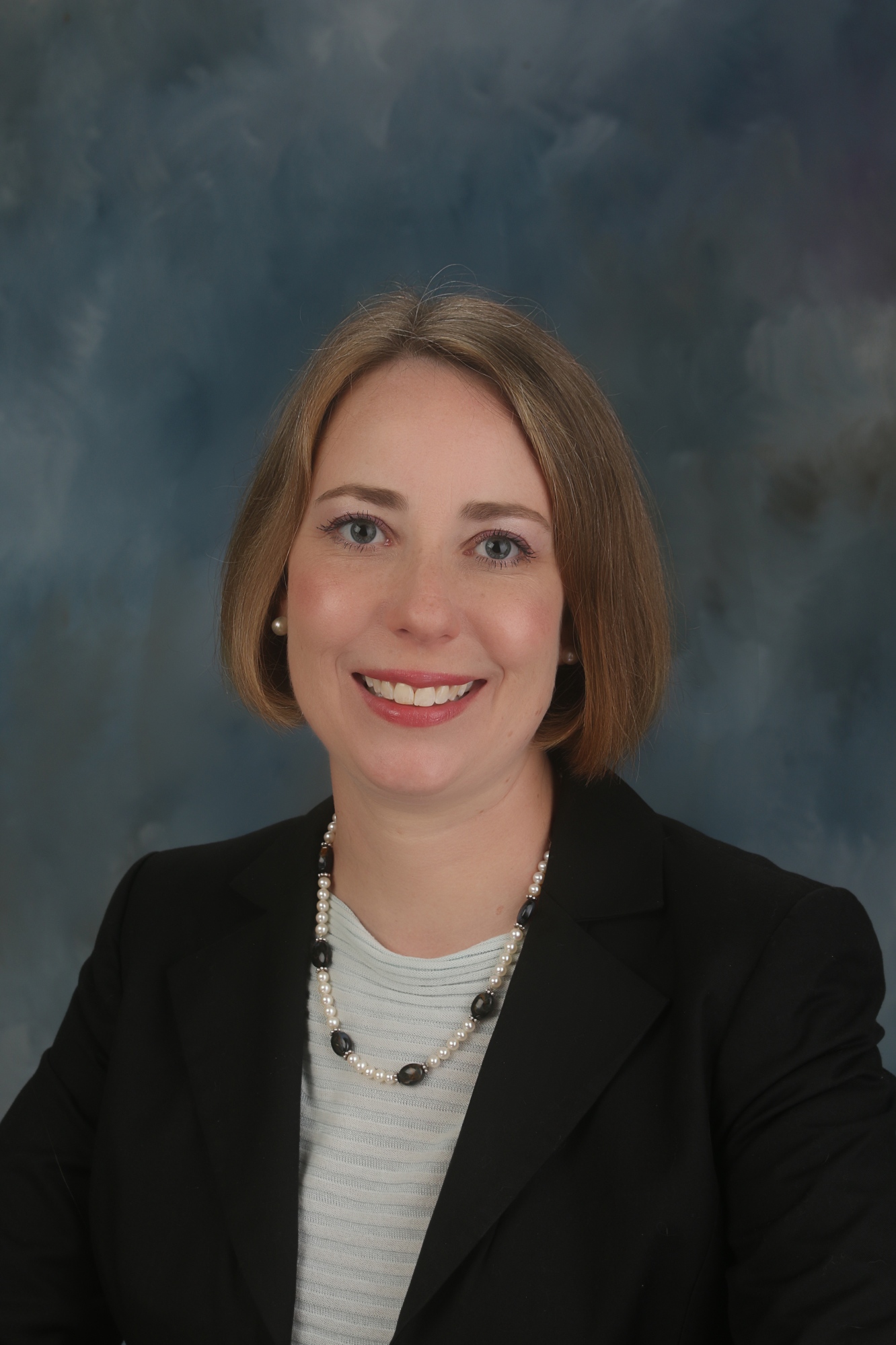
Sarah Mardon is the Geoscience Communications Specialist for the Kentucky Geological Survey. She has a Master of Science degree in geology, a Bachelor of Arts degree in geology, and a Bachelor of Science degree in economics, all from the University of Kentucky. Sarah is involved with science communication and social media research, serves as the government liaison, and manages communications on social media platforms and news releases. She enjoys gardening, hiking, and visiting places with a rich cultural heritage
Friday, October 22, 2021
De-mystifying EPSCoR & IDeA ntly head of the Geoscience Information Management section. He has a Master of Science degree in geology from the University of Tennessee, Knoxville, and a Bachelor of Science degree in geology from Guilford College in Greensboro, NC. His primary work interests are delivering geologic data to the public through web applications, GIS application in geoscience, and structural geology and geologic mapping. Doug enjoys cycling, camping and hiking with his family and friends, and playing guitar.
ntly head of the Geoscience Information Management section. He has a Master of Science degree in geology from the University of Tennessee, Knoxville, and a Bachelor of Science degree in geology from Guilford College in Greensboro, NC. His primary work interests are delivering geologic data to the public through web applications, GIS application in geoscience, and structural geology and geologic mapping. Doug enjoys cycling, camping and hiking with his family and friends, and playing guitar.
Sarah Mardon is the Geoscience Communications Specialist for the Kentucky Geological Survey. She has a Master of Science degree in geology, a Bachelor of Arts degree in geology, and a Bachelor of Science degree in economics, all from the University of Kentucky. Sarah is involved with science communication and social media research, serves as the government liaison, and manages communications on social media platforms and news releases. She enjoys gardening, hiking, and visiting places with a rich cultural heritage
Friday, October 22, 2021
Special Symposium Event, 2:00-4:00 pm ET
EPSCoR (Established Program to Stimulate Competitive Research) and IDeA (Institutional Development Award) are programs bringing dedicated scientific research dollars to Kentucky.
If you do research, we want you to know about them!
Watch the Recording
Presenters shared:
- A statewide overview of how EPSCoR & IDeA work in Kentucky
- Information about the various available grant programs (NSF, DOE, NASA, and NIH)
- Advice on how to get the money
- Ideas about how to use EPSCoR & IDeA to advance diversity equity and inclusion goals
- How to weigh in on the future of EPSCoR
Symposium speakers
Dr. Cate Webb, Ky-EPSCoR Statewide committee and Associate Dean, WKU Ogden College of Science & Engineering
2017 Kentucky Statewide Science, Technology and Innovation Plan
Future funding increases are on the way
Dr. John Balk, DOE EPSCoR National Labs partnership awardee and Associate Dean, UK Research and Graduate Studies
John Balk slide presentation
Dr. Rodney Andrews, Program Director – Kentucky NSF EPSCoR & Principal Investigator – Kentucky NSF EPSCoR Track 1-RII Award
Jeff Mossey, Program Manager, Kentucky NSF EPSCoR
Jeff Mossey slide presentation | Contact Jeff
Dr. Alexandre Martin, Director, NASA-KY NASA Kentucky Space Grant Consortium and EPSCoR Programs
Alexandre Martin slide presentation
Dr. Bruce Mattingly, KY INBRE Program Coordinator & Director of the Developmental Research Core / NIH- IDeA
Dr. Scott Wicker, NSF Committee on the Future of EPSCoR and Chair, School of STEM, Kentucky State University


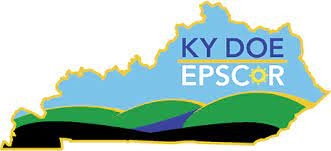
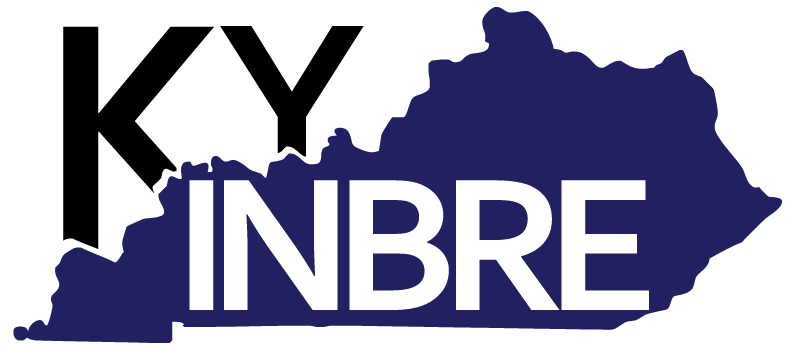
Friday, September 24, 2021
Hemp Research at Murray State University
Watch the Recording

Speakers:
Dr. David Ferguson, Professor of Agronomy, Hutson School of Agriculture
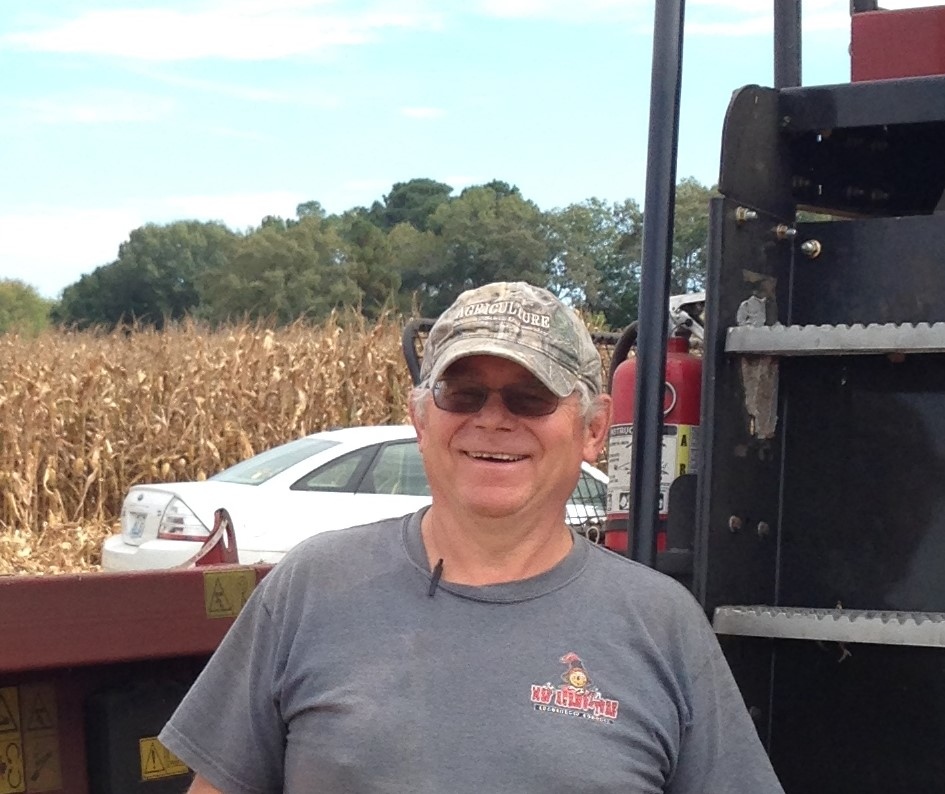
Mallorie Snider, Research Coordinator, Hutson School of Agriculture
Dr. Iin Handayani, Professor of Agronomy, Hutson School of Agriculture
Dr. David Ferguson, Professor of Agronomy, Hutson School of Agriculture
Although hemp (Cannabis sativa L.) is an old crop, but was illegal to be grown in the United States for the last half century. This changed with the recent approval in the US farm bill in 2018 and subsequent state approval. There are so many areas to be researched with hemp. Hemp can be grown for fiber, seed, and cannabidiol (CBD). This research will describe some of our recent research at Murray State for hemp production of CBD. Replicated field trials of CBD hemp were grown on the historic broiler litter fertility plots and the long-term fertility copper plots, and the results will be described for the 2021 season. Additionally, a replicated biofungicide trial from 2019 will be presented.
Mallorie Snyder, Research Coordinator, Hutson School of Agriculture

Hemp is a popular subject among animal owners and farmers. However, many may not know that hemp feed for animals is illegal according to the AAFCO. However, Murray State University (MSU) has conducted several approved research-only trials utilizing hemp seed, hemp cake and CBD products. This presentation will describe MSU’s animal hemp feeding studies. Two different poultry studies were conducted with laying hens and broilers, a pilot study was conducted with the use of CBD pellets for horses, another CBD study was conducted to determine the effects of CBD on osteoarthritic dogs and the most recent study was utilizing a CBD gel on calves being weaned.
Dr. Iin Handayani, Professor of Agronomy, Hutson School of Agriculture
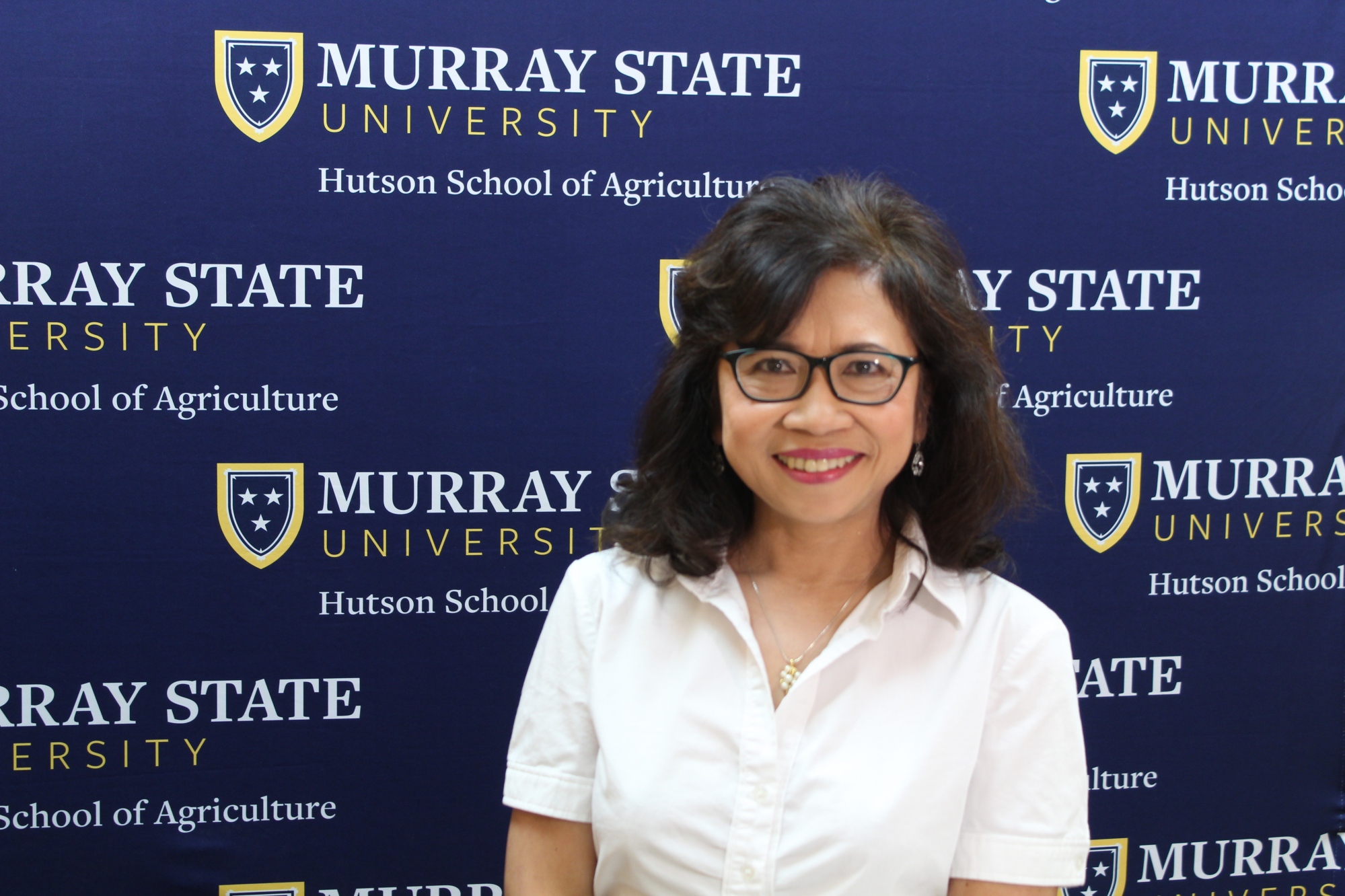
Can growing hemp rebuild soil quality?
Since the passage of the 2018 Farm Bill, there has been a massive increase of interest in hemp cultivation. While the market is still unstable, farmers all across the country would like to grow hemp. Hemp farming offers hope for a better future amidst the challenges and uncertainty that farmers face today. Currently, hemp is considered an important crop in Kentucky Agriculture Movement. However, there is very limited scientific data and information on the ability of hemp crops to rebuild soil quality. This presentation will provide initial findings on soil responses as affected by the growth of hemp. Data on soil quality indicators such as physical properties, soil fertility and carbon sequestration will be presented.
Wednesday, July 14, 2021
Unforeseen Consequences? Physiological Fallout from COVID-19
Watch the Recording
"COVID-19: Effect on Eye Health and Vision"
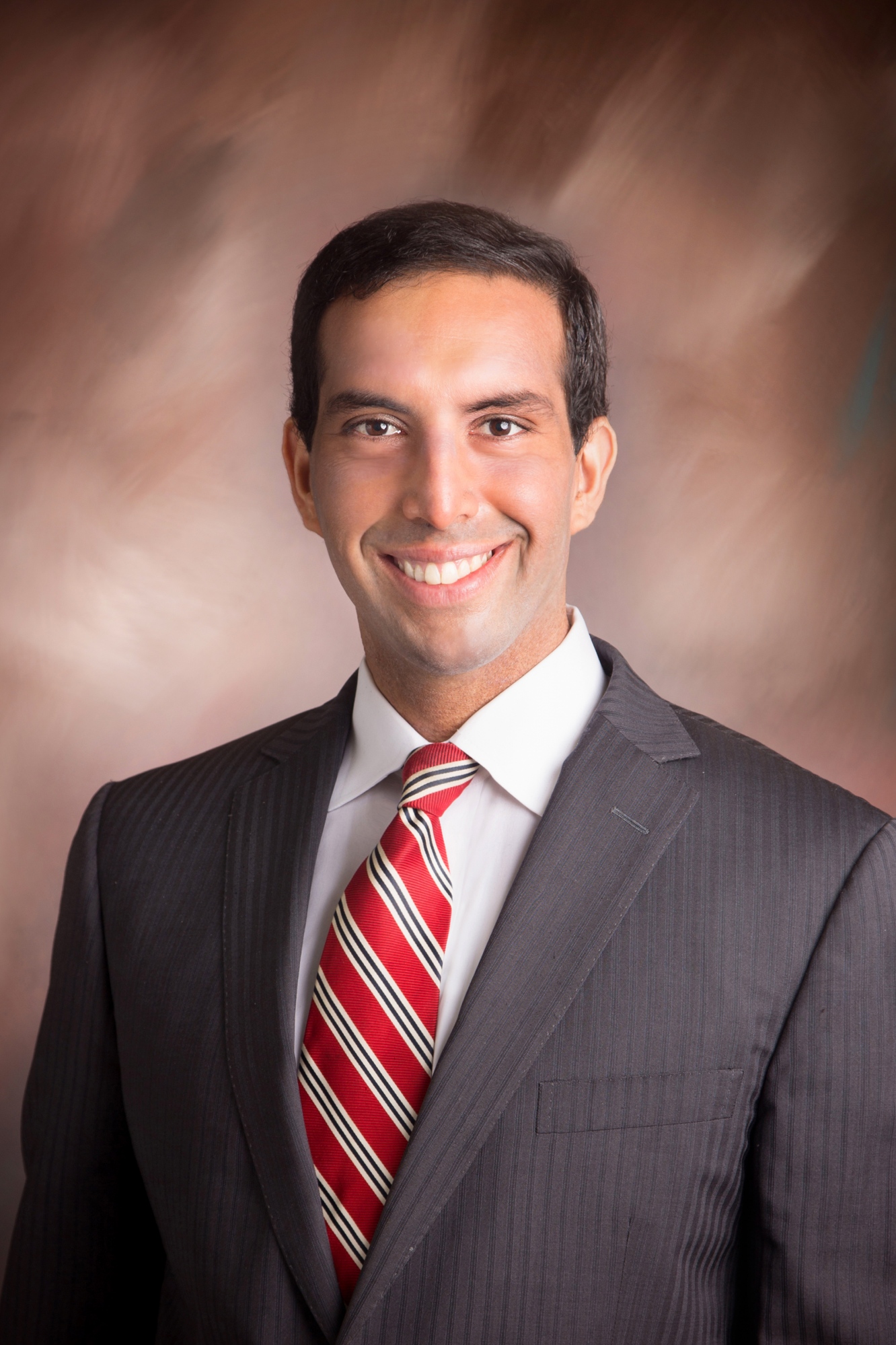 Slide presentation
Slide presentationDr. Harpal Sandhu, Ph.D., Clinical Professor, Oregon Health & Science University
Harpal Sandhu, MD, FRCSC, is a vitreoretinal surgeon and uveitis specialist. After graduating from Harvard Medical School, he completed his residency in ophthalmology at the Massachusetts Eye and Ear Infirmary, followed by fellowship in vitreoretinal surgery at the Scheie Eye Institute, University of Pennsylvania. He was an Assistant Professor of Ophthalmology at the University of Louisville for four years before assuming a position in Portland, Oregon. His research interests include mechanisms of anti-inflammatory and immunomodulatory therapies for retinal diseases, pharmacoepidemiology, and artificial intelligence in medicine. He is currently an attending physician and surgeon at Retina Northwest, Clinical Professor of Ophthalmology at Oregon Health and Science University, and Adjunct Professor of Bioengineering at the University of Louisville. His talk will be a brief survey of the range of ocular pathology associated with COVID-19 infection as well as COVID-19 vaccines, will assess causation (or lack thereof) for each of these, and finally will propose mechanisms for the associations that appear genuine.
"COVID Encephalopathy"
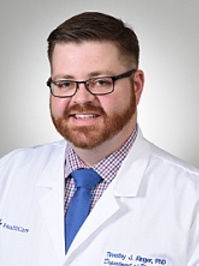
Dr. Timothy Ainger, Ph.D., University of Kentucky College of Medicine and Kentucky Neuroscience Institute
This presentation will examine the various neurologic and cognitive impacts that COVID-19 can have. It will review current literature, domestic and international trends, and several unique case studies wherein the diverse post-COVID presentation will be scrutinized. Implications for treatment/management based on contemporary research will also be reviewed and discussed. Dr. Ainger's Bio
Wednesday June 9, 2021
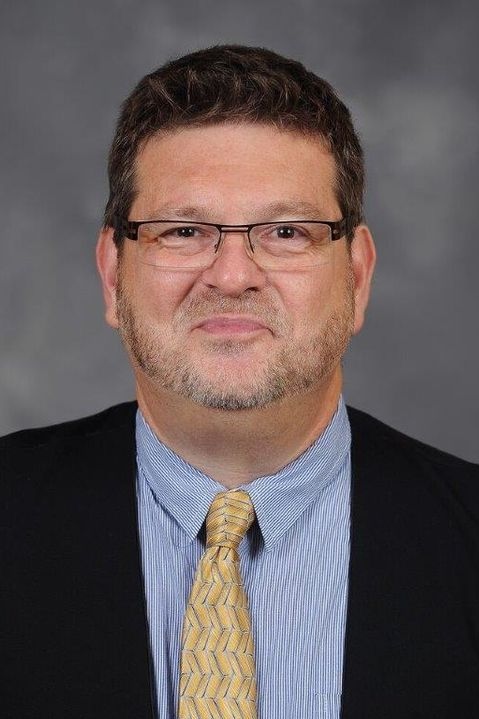
The COVID-19 Pandemic: Its Natural History and a University Response
Dr. Christopher Woolverton
Watch the Recording
A highly pathogenic influenza was anticipated to be the cause of next 21st century pandemic. It was not. A novel coronavirus was, and it caught most of the world by surprise. This discussion will track the natural history of the SARS-CoV-2 coronavirus and the mitigation response by a mid-western university. Included will be a discussion of original research on the development of a novel textile as a potential filtering face mask, and the use of silica beads to recycle used, but undamaged, N95 filtering face respirators.
Christopher J. Woolverton is Professor of Epidemiology in the College of Public Health at Kent State University. There, Woolverton teaches courses in Risk Assessment, Risk Analysis, and the Biological Basis of Public Health. Woolverton's research is based in applied microbiology to detect and control infectious diseases of public health concern. He has published his research on a liquid crystal biosensor, use of electron beam radiation and cold plasma to destroy bacterial spores and biofilms, and antimicrobial drug delivery from liquid crystals and human clotting proteins. Woolverton has lectured internationally on his research and novel pedagogical techniques to teach biosafety. He is a former author of Prescott's Microbiology. Woolverton also manages the NIH Designated Training Facility, at Kent State, with its cold BSL-3 Laboratory, teaching principles and practices of Biorisk Management. He also serves on the faculty of the NIH's National Biosafety and Biosecurity Training Program, the graduate faculty of the Northeastern Ohio Medical University, and the faculty of the Akron (OH) Cooperative Medical Laboratory Science Program. Woolverton is currently a Jefferson Science Fellow of the National Academies of Science, Engineering, and Medicine, serving in the Medical Sciences Bureau at the United States Department of State.
.
Monday May 24, 2021
Bourbon Science
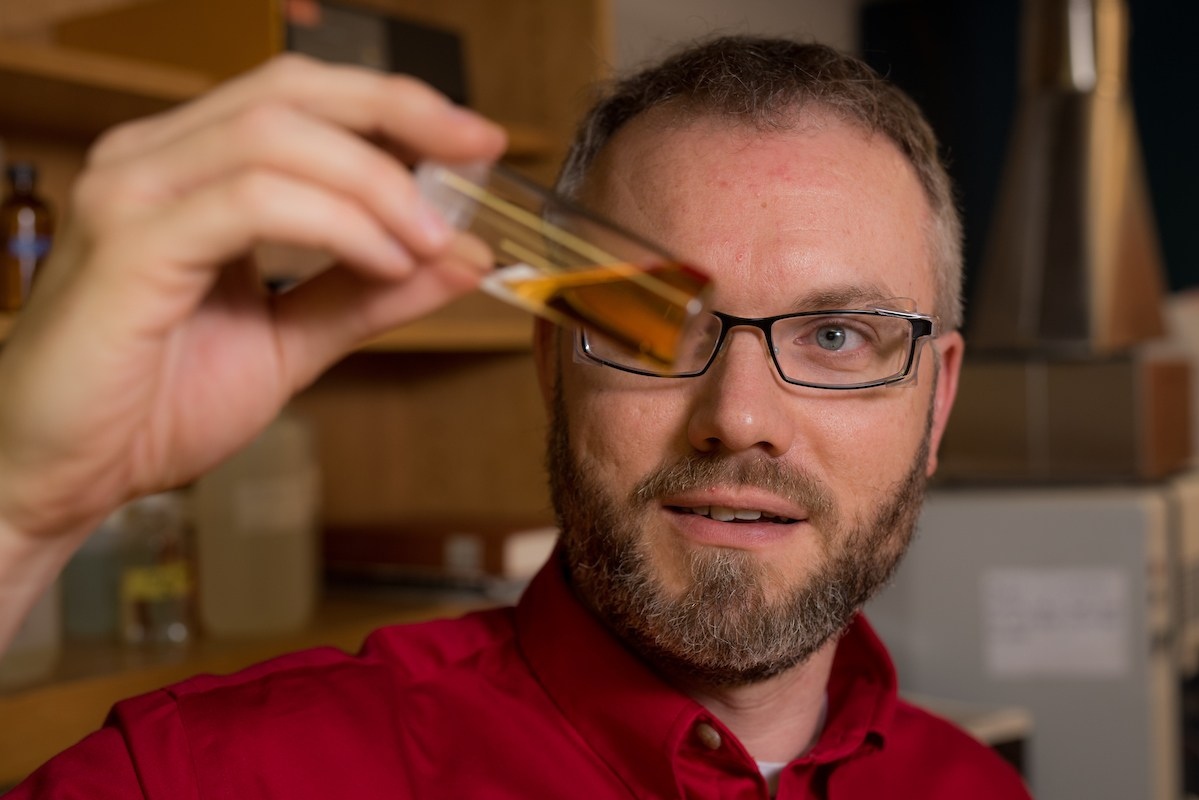
Watch the Recording
Dr. Leonard Demoranville, Centre College
Dr. Pat Heist, Ferm Solutions
Dr. John Medley, Buffalo Trace
Dr. Seth DeBolt, University of Kentucky
Lenny Demoranville is Associate Professor of Chemistry at Centre College. Prior to joining Centre’s faculty, he earned his Ph.D. at the Un
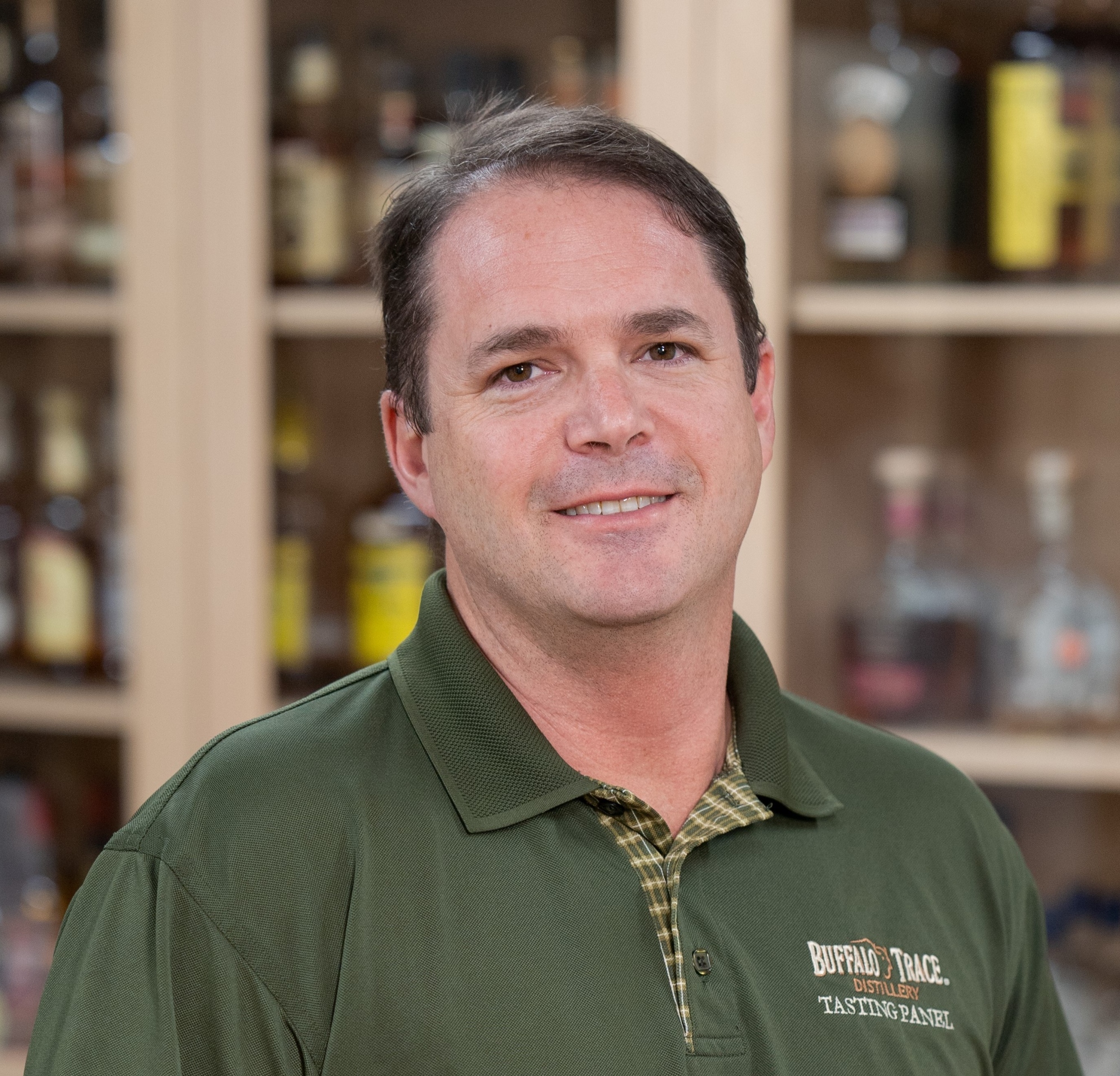 iversity of Maryland-College Park and was a National Research Council Post-Doctoral Fellow at the National Institute of Standards and Technology where he focused on the detection of trace illicit drugs. During his interview at Centre he was asked what upper-level elective he would enjoy teaching. His answer: “Chemistry of Beer and Wine.” When the interviewer responded “That won’t work here,” his heart dropped. The interviewer quickly followed up “We are in Kentucky, you’ll have to add bourbon to the list!” Thus was born his course entitled “Chemistry of Beer, Wine and Bourbon.” Partially because of interest generated through that course, his research group has shifted from forensics to focus on the chemical analysis of bourbon. He has given public talks to Centre alumni, friends and community groups about the chemistry involved in the production of bourbon.
iversity of Maryland-College Park and was a National Research Council Post-Doctoral Fellow at the National Institute of Standards and Technology where he focused on the detection of trace illicit drugs. During his interview at Centre he was asked what upper-level elective he would enjoy teaching. His answer: “Chemistry of Beer and Wine.” When the interviewer responded “That won’t work here,” his heart dropped. The interviewer quickly followed up “We are in Kentucky, you’ll have to add bourbon to the list!” Thus was born his course entitled “Chemistry of Beer, Wine and Bourbon.” Partially because of interest generated through that course, his research group has shifted from forensics to focus on the chemical analysis of bourbon. He has given public talks to Centre alumni, friends and community groups about the chemistry involved in the production of bourbon. As the Technical Services Director at Buffalo Trace Distillery, John Medley is responsible for providing technical leadership for Sazerac products and implementing improvements in manufacturing processes. Under John’s helm, the new product development team creates successful brands enjoyed by fans all over the world.
With a broad background in chemistry and engineering, John began his career with Buffalo Trace Distillery in 2014 as a Lead Chemist, where he led the quality lab and worked to foster strong workplace teams and encourage advancement to higher-level positions. John has also been instrumental in leading the development and implementation of a robust sensory and analytical testing program to improve methodology and performance across Sazerac’s manufacturing facilities across the globe.
Not only has John served as an appointed leader among colleagues, but he has also been a visiting professor to students at education institutions including Transylvania University and Centre College in Kentucky. John’s background showcases analytical and innovative skills as a scientist and engineer for more than 15 years in notable nation and internal companies.
Throughout his career, John’s research has been published in multiple peer-reviewed journals and has resulted in five issued patents for invention of novel product formulations and applications. John’s passion for chemistry and continuous improvement has led to an extensive career in the spirits industry, and his expertise lead him to be a panelist at the National Alcohol Beverage Control Association (NABCA) 25th annual Administrators Conference.
John holds a Bachelor of Arts in Chemistry from Transylvania University, a Master of Science in Organic Chemistry from the University of Michigan, and a Master of Science and Ph.D. in Chemical Engineering from the University of Kentucky. John is a member of the American Society of Quality and the American Chemical Society and is a TTB certified Distilled Spirits Chemist.
Dr. Pat Heist is well known in the beverage alcohol industry for problem solving skills relative to the microbiology and biochemistry of fermentation. Education includes B.S., M.S., and Ph.D. degrees from the University of Kentucky in Plant Pathology and microbiology-related fields. Dr. Heist spent 6 years as a Medical Microbiology Professor at Kentucky College of Osteopathic Medicine before co-founding Ferm Solutions, Inc., a provider of yeast, fermentation products and technical services to hundreds of distilleries in the U.S. and worldwide. Dr. Heist and his research team collaborate with industrial and academic partners on projects related to controlling bacterial contamination during alcohol production and yeast strain selection and improvement for Bourbon and other distilled spirits and have published multiple times. In 2013, Dr. Heist, along with his business partner Shane Baker, co-founded Wilderness Trail Distillery, which is currently one of the fastest growing premium bourbon whiskey distilleries and in six short years has grown to become the 14th largest Bourbon producer in the U.S. and the 18th member of the Kentucky Bourbon Trail. Dr. Heist also serves as an Adjunct Professor at the James B. Beam Institute in the Department of Agriculture at the University of Kentucky.
Seth DeBolt is the director of the James B Beam Institute for Kentucky Spirits and the Distillation, Wine and Brewing Undergraduate Certificate Program at the University of Kentucky. As a graduate student specializing in wine, he divided his time between the University of Adelaide and the University of California, Davis. With both institutions based in prominent wine-growing regions, he was able to conduct groundbreaking research, discovering the tartaric acid pathway in wine grapes. Now he is eager to improve our knowledge of the key chemical components that determine quality in bourbon and is collaborating on a variety of projects across campus and within the spirits industry focusing on bourbon whiskey production, flavor and quality.
Tuesday April 27, 7pm EST
COVID-19 and the Cardiovascular System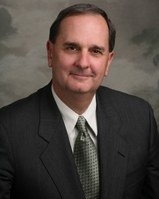
Dr. Stuart Williams, University of Louisville
In collaboration with the Kentucky chapter of the American Physiological Society
Watch the Recording
Dr. Stuart Williams received his Ph.D. in Cell Biology from the University of Delaware followed by postdoctoral training in Pathology at the Yale School of Medicine. During the period 1980 to 1990 he held a faculty appointment at Jefferson Medical College where he was Director of Research in the Department of Surgery. In 1990 Dr. Williams joined the faculty at the University of Arizona and founded the University of Arizona Biomedical Engineering Program creating a research and educational link between the Medical School and College of Engineering. He held faculty positions jointly in Biomedical Engineering, Surgery, Physiology and Materials Science and Engineering. In 2007 Dr. Williams was selected as the Scientific Director of the newly established Cardiovascular Innovation Institute, a partnership between Jewish Hospital and the University of Louisville in Louisville Kentucky. He recently established the Bioficial Organs Program to create human tissues and organs for clinical therapeutics and in vitro drug testing using a patient’s own cells. Central to this effort is the use of 3D bioprinting technologies. Dr. Williams’ research interests have focused on medical devices and regenerative medicine. He developed and patented the first methods to use fat-derived stem and regenerative cells for therapeutic use. Dr. Williams has authored over 400 scientific publications including scientific papers, abstracts, book chapters and editorials. His entrepreneurial spirit has resulted in 27 issued US patents with numerous patents pending. He has founded several biotechnology companies; maintained active managerial positions and has been an active consultant to the medical device, regenerative medicine and pharmaceutical community.
COVID-19 and the Cardiovascular System

Dr. Stuart Williams, University of Louisville
In collaboration with the Kentucky chapter of the American Physiological Society
Watch the Recording
Dr. Stuart Williams received his Ph.D. in Cell Biology from the University of Delaware followed by postdoctoral training in Pathology at the Yale School of Medicine. During the period 1980 to 1990 he held a faculty appointment at Jefferson Medical College where he was Director of Research in the Department of Surgery. In 1990 Dr. Williams joined the faculty at the University of Arizona and founded the University of Arizona Biomedical Engineering Program creating a research and educational link between the Medical School and College of Engineering. He held faculty positions jointly in Biomedical Engineering, Surgery, Physiology and Materials Science and Engineering. In 2007 Dr. Williams was selected as the Scientific Director of the newly established Cardiovascular Innovation Institute, a partnership between Jewish Hospital and the University of Louisville in Louisville Kentucky. He recently established the Bioficial Organs Program to create human tissues and organs for clinical therapeutics and in vitro drug testing using a patient’s own cells. Central to this effort is the use of 3D bioprinting technologies. Dr. Williams’ research interests have focused on medical devices and regenerative medicine. He developed and patented the first methods to use fat-derived stem and regenerative cells for therapeutic use. Dr. Williams has authored over 400 scientific publications including scientific papers, abstracts, book chapters and editorials. His entrepreneurial spirit has resulted in 27 issued US patents with numerous patents pending. He has founded several biotechnology companies; maintained active managerial positions and has been an active consultant to the medical device, regenerative medicine and pharmaceutical community.
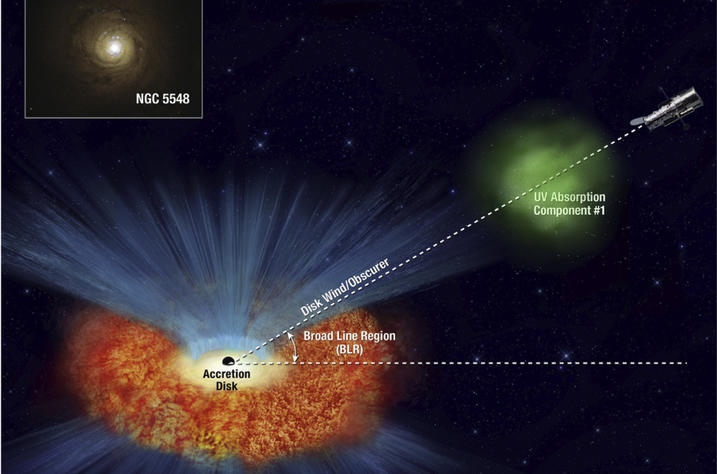
Black Holes and how we can find and measure them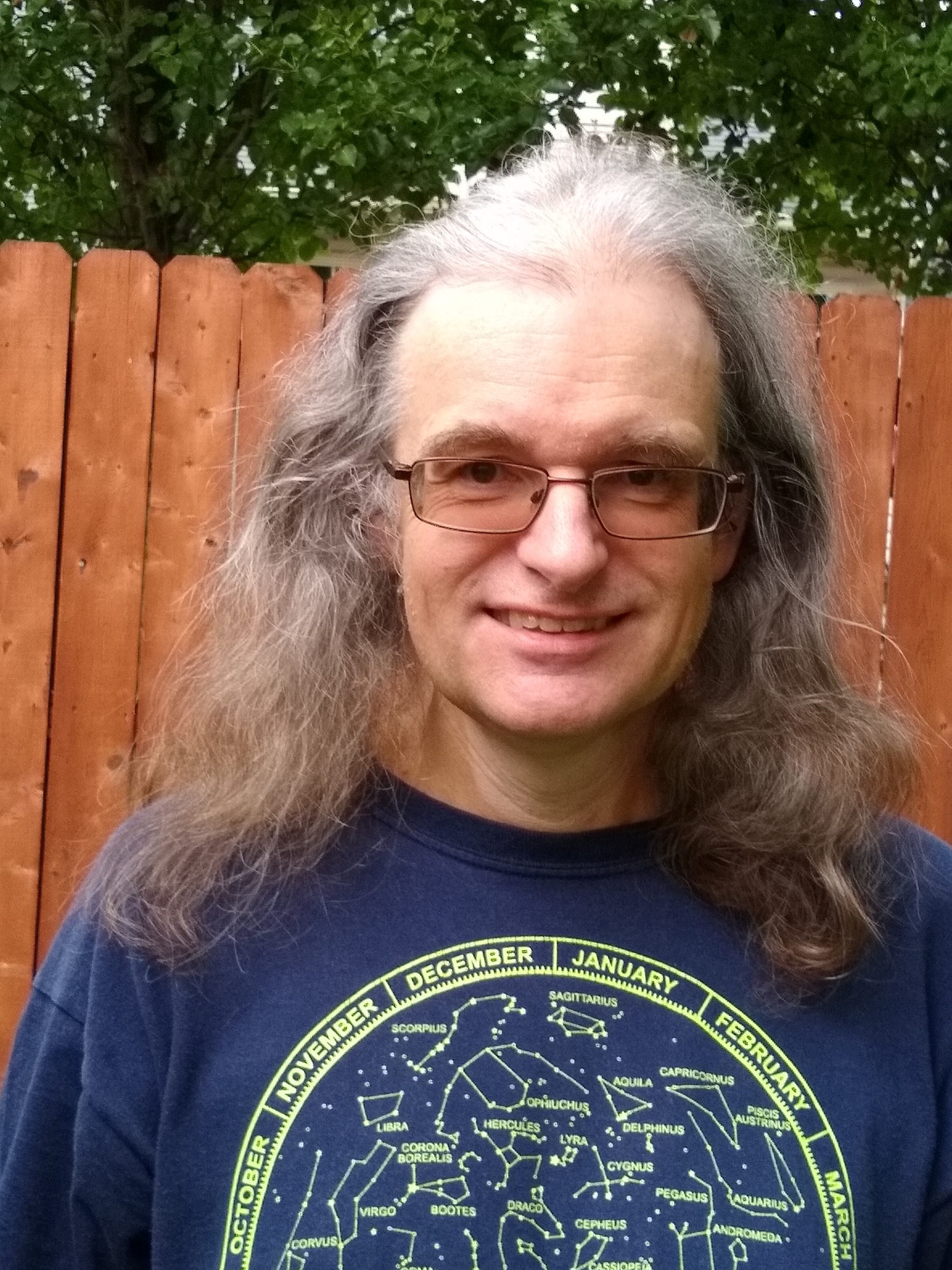

Dirk Grupe, Space Science Center, Morehead State University - Slide presentation
Although the idea of a Black Hole is more than 200 years old based on Newtonian Physics the accurate description of a Black Hole is embedded in Einstein's General Theory of Relativity. In February 1916 Karl Schwarzschild formulated the metric that describedthe curvature or warpage of spacetime around massive bodies. At the time these were just theoretical objects and Einstein was never convinced that they really exist, but we know today that super massive black holes exist in the centers of every single galaxy, like our Milky Way. From they physical parameters Black Holes are the simplest objects in the Universe, just described by their mass, spin, and theoretically their electric charge. I will describe methods how we can measure their spin and mass. I will then also talk about my own research on highly variable accreting supermassive black holes - Active Galactic Nuclei which I primarily observe with X-ray/Ultra-violet satellites, like Swift and XMM-Newton.
Before coming to Kentucky, Dr. Grupe was a Senior Research Associate At Penn State working on the NASA Swift mission. Dr. Grupe'sresearch is on Active Galactic Nuclei (AGN), accreting supermassive black holes in the centers of galaxies. His interest is in particular in Narrow-Line Seyfert 1 galaxies, AGN on thelower end of the black hole mass spectrum, which are characterized by strong X-ray and ultra-violet variability. What the NASA Swift mission allows is the long-term monitoring of AGN simultaneously in X-rays and the ultra-violet.
When a Black Hole Went on a Holiday
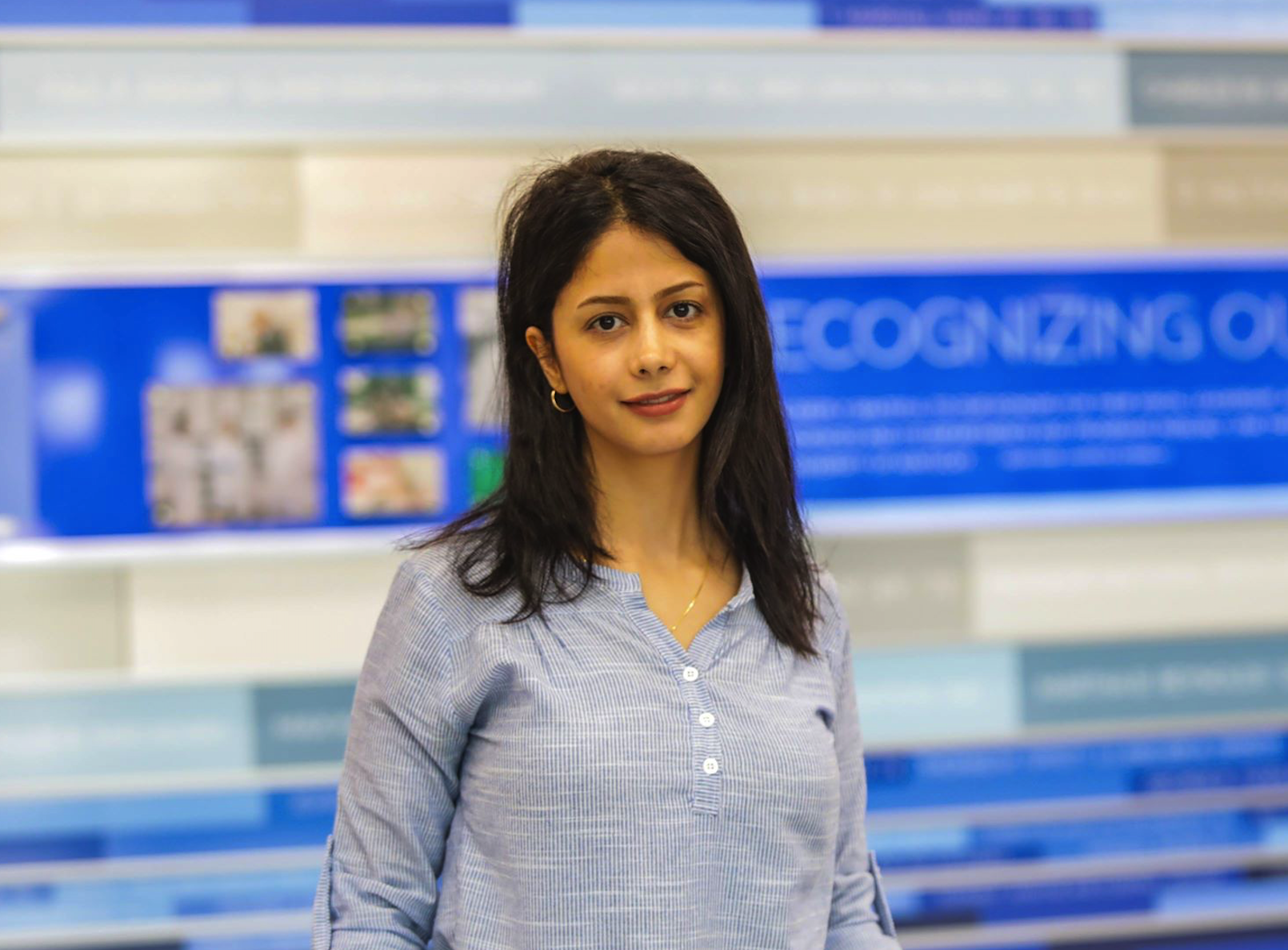
Dr. Maryam Dehghanian,
Astrophysics, the University of Kentucky
Dr. Dehghanian has worked on a large Space Telescope project entitled "HST STORM", a comprehensive study of the Seyfert galaxy NGC 5548. During her Ph.D. studies, she resolved a complex question aroused from an unexpected astrophysical phenomenon observed by the Hubble Space Telescope (HST): NGC 5548 is a bright and well-studied Active Galactic Nuclei (AGN) that has been the target of many monitoring campaigns since 1987. The most extensive observations were in 2013 and 2014, in which its emission and absorption lines behaved in an anomalous way that had never before been seen. For a two-month period during the observations, emission and absorption lines did not respond to the variations of the continuum – the HST team said that the spectral lines had “gone on holiday”.
She successfully explained the physics by which the variations of a disk wind produce the observed holiday. Her work was once highlighted in the University of Kentucky news. As part of NASA's major "UV Initiative", The Space Telescope and Science Institute (STScI) awarded an additional 198 orbits on the Hubble Space Telescope for a new project, with the innovative title "AGN STORM2", to study a different galaxy, Mrk 817. Dr. Dehghanian is one of the 17 scientists who proposed the project. The STScI awarded a grant to the University of Kentucky to support Dr. Dehghanian as a postdoctoral scholar to continue her work. You can find her papers at NASA ADS.
Tuesday, February 23, 7pm EST
COVID-19 Vaccines & Therapeutics
COVID-19 and Cancer Research See slides here
Dr. Paula Bates, Professor of Medicine, University of Louisville
Co-Director, KYNETIC (an NIH REACH hub)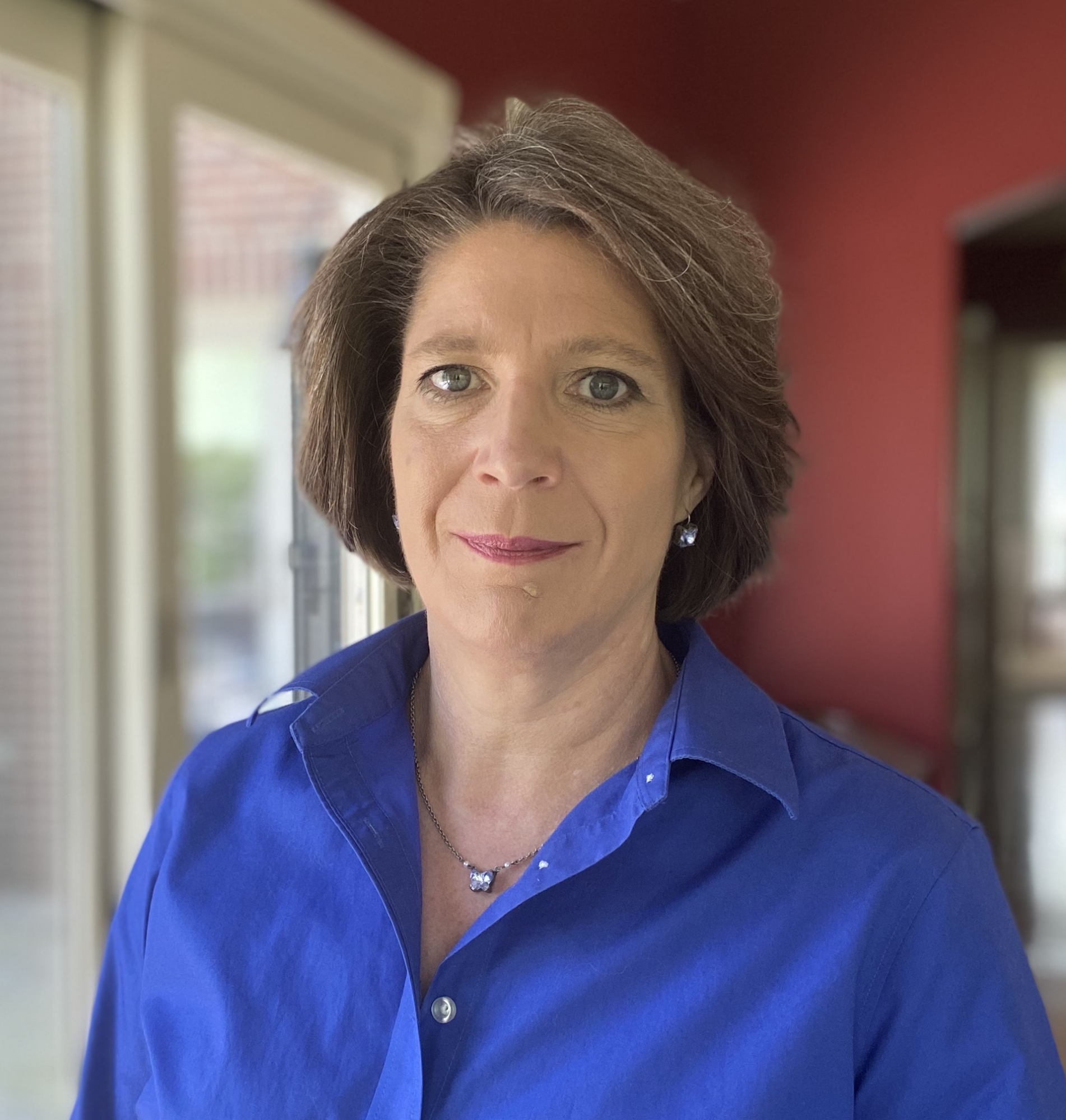
Co-Director, KYNETIC (an NIH REACH hub)

Paula J. Bates is a Professor of Medicine at the University of Louisville and the James Graham Brown Cancer Center. She also co-directs the Kentucky Network for innovation & Commercialization (KYNETIC), which is a statewide program that helps academic researchers turn their health-related discoveries or ideas into real-world products. KYNETIC provides research grants, entrepreneurial education, mentoring, and access to a network of relevant expertise; these opportunities are open to all faculty, staff, and students at Kentucky’s public universities and community colleges. Bates was involved in the discovery and bench-to-bedside translation of an experimental anticancer drug named AS1411. This agent is an aptamer (made from synthetic DNA) that binds specifically to nucleolin, a protein with roles in both cancer and viral infections. She is currently involved in numerous translational research projects and is working with an industry partner to take two AS1411-related drugs (one for cancer, one for COVID-19) to human clinical trials. Bates was co-founder of a successful startup (Aptamera) and is a co-inventor on 15 issued US patents and more than 30 foreign patents. She was elected as Fellow of the National Academy of Inventors in 2016. Her talk will focus on the intersection of COVID-19/cancer research and the story behind the recent discovery that AS1411 has promising activity against the novel coronavirus.
COVID-19 Vaccines See slides here
Dr. Sanjay Mishra, COVID-19 and Cancer Consortium, Vanderbilt University Medical Center
Dr. Mishra is the project coordinator for the "COVID-19 and Cancer Consortium", (CCC19) consisting of over 125 cancer centers and other organizations that have 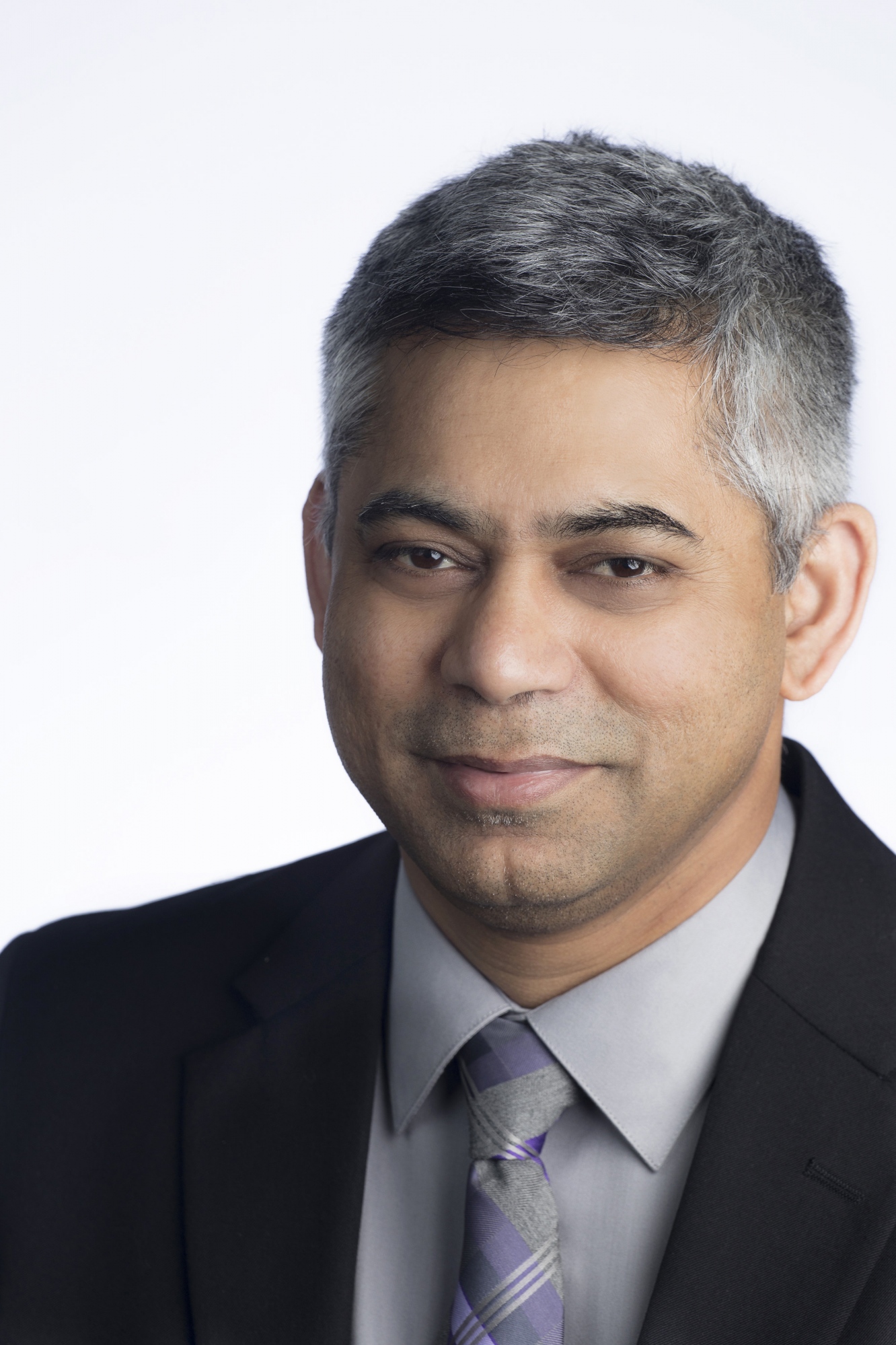 come together to collect data about cancer patients who have been infected with COVID-19. Previously, Dr. Mishra worked as a postdoctoral fellow in the Vanderbilt Vaccine Center, where he tried developing vaccine candidates against Zika and Dengue. He got his Ph.D. from Vanderbilt University in Chemical and Physical Biology, studying small heat shock proteins (sHSPs) for their role in stress response and aging. Using protein engineering and CRISPR knockout strategies, Sanjay showed that sHSPs have conserved roles among vertebrates, and sHSPs have evolved possibly under the organellar and organismic proteostatic demands. When not in lab, Sanjay writes on popular science such as recently authorized vaccines against COVID-19. You can find his articles at The Conversation
come together to collect data about cancer patients who have been infected with COVID-19. Previously, Dr. Mishra worked as a postdoctoral fellow in the Vanderbilt Vaccine Center, where he tried developing vaccine candidates against Zika and Dengue. He got his Ph.D. from Vanderbilt University in Chemical and Physical Biology, studying small heat shock proteins (sHSPs) for their role in stress response and aging. Using protein engineering and CRISPR knockout strategies, Sanjay showed that sHSPs have conserved roles among vertebrates, and sHSPs have evolved possibly under the organellar and organismic proteostatic demands. When not in lab, Sanjay writes on popular science such as recently authorized vaccines against COVID-19. You can find his articles at The Conversation
 come together to collect data about cancer patients who have been infected with COVID-19. Previously, Dr. Mishra worked as a postdoctoral fellow in the Vanderbilt Vaccine Center, where he tried developing vaccine candidates against Zika and Dengue. He got his Ph.D. from Vanderbilt University in Chemical and Physical Biology, studying small heat shock proteins (sHSPs) for their role in stress response and aging. Using protein engineering and CRISPR knockout strategies, Sanjay showed that sHSPs have conserved roles among vertebrates, and sHSPs have evolved possibly under the organellar and organismic proteostatic demands. When not in lab, Sanjay writes on popular science such as recently authorized vaccines against COVID-19. You can find his articles at The Conversation
come together to collect data about cancer patients who have been infected with COVID-19. Previously, Dr. Mishra worked as a postdoctoral fellow in the Vanderbilt Vaccine Center, where he tried developing vaccine candidates against Zika and Dengue. He got his Ph.D. from Vanderbilt University in Chemical and Physical Biology, studying small heat shock proteins (sHSPs) for their role in stress response and aging. Using protein engineering and CRISPR knockout strategies, Sanjay showed that sHSPs have conserved roles among vertebrates, and sHSPs have evolved possibly under the organellar and organismic proteostatic demands. When not in lab, Sanjay writes on popular science such as recently authorized vaccines against COVID-19. You can find his articles at The ConversationThursday, January 21, 7pm EST
Diabetes Research: Then and Now
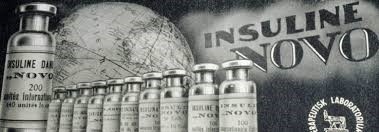
On the Track of Diabetes Cure
Dr. Iuliana Popescu, Barnstable Brown Diabetes Research Center
The discovery of insulin remains one of the most remarkable achievements of medic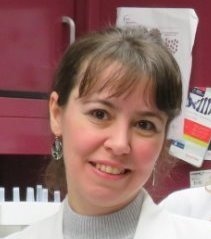 al research of all times. But, overall, it was not the result of a single research team, although the Nobel Prize was controversially granted to only two Canadian scientists: F. Banting and J. Macleod who shared their awards with coworkers C. Best and J. Collip; the team had obtained and purified the pancreatic extract (1921) and showed that it can reverse diabetes after it has been injected into patients. However, the modern period of insulin history is set in the 19th century, by the research of C. Bernard, P. Langerhans, O. Minkovski, J. Von Mering, and several others, who laid the foundations of the scientific understanding of diabetes and the first attempts to get the miracle hormone.
al research of all times. But, overall, it was not the result of a single research team, although the Nobel Prize was controversially granted to only two Canadian scientists: F. Banting and J. Macleod who shared their awards with coworkers C. Best and J. Collip; the team had obtained and purified the pancreatic extract (1921) and showed that it can reverse diabetes after it has been injected into patients. However, the modern period of insulin history is set in the 19th century, by the research of C. Bernard, P. Langerhans, O. Minkovski, J. Von Mering, and several others, who laid the foundations of the scientific understanding of diabetes and the first attempts to get the miracle hormone.
 al research of all times. But, overall, it was not the result of a single research team, although the Nobel Prize was controversially granted to only two Canadian scientists: F. Banting and J. Macleod who shared their awards with coworkers C. Best and J. Collip; the team had obtained and purified the pancreatic extract (1921) and showed that it can reverse diabetes after it has been injected into patients. However, the modern period of insulin history is set in the 19th century, by the research of C. Bernard, P. Langerhans, O. Minkovski, J. Von Mering, and several others, who laid the foundations of the scientific understanding of diabetes and the first attempts to get the miracle hormone.
al research of all times. But, overall, it was not the result of a single research team, although the Nobel Prize was controversially granted to only two Canadian scientists: F. Banting and J. Macleod who shared their awards with coworkers C. Best and J. Collip; the team had obtained and purified the pancreatic extract (1921) and showed that it can reverse diabetes after it has been injected into patients. However, the modern period of insulin history is set in the 19th century, by the research of C. Bernard, P. Langerhans, O. Minkovski, J. Von Mering, and several others, who laid the foundations of the scientific understanding of diabetes and the first attempts to get the miracle hormone.Cardiac metabolism in health and disease See sildes here
Dr. Bradford Hill, University of Louisville Diabetes and Obesity Center
Dr.Hill will discuss how the use of nutrients by the heart can dictate cardiac responses to s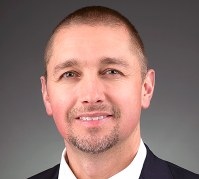 tress. He will begin by discussing why studying metabolism is important and highlight some of the major questions in the field. In the latter half of the talk, he will present data that highlight new strategies to track metabolism in the heart, which could lend insight into how cardiac remodeling occurs under physiological contexts such as exercise and in pathological contexts such as chronic hypertension.
tress. He will begin by discussing why studying metabolism is important and highlight some of the major questions in the field. In the latter half of the talk, he will present data that highlight new strategies to track metabolism in the heart, which could lend insight into how cardiac remodeling occurs under physiological contexts such as exercise and in pathological contexts such as chronic hypertension.
 tress. He will begin by discussing why studying metabolism is important and highlight some of the major questions in the field. In the latter half of the talk, he will present data that highlight new strategies to track metabolism in the heart, which could lend insight into how cardiac remodeling occurs under physiological contexts such as exercise and in pathological contexts such as chronic hypertension.
tress. He will begin by discussing why studying metabolism is important and highlight some of the major questions in the field. In the latter half of the talk, he will present data that highlight new strategies to track metabolism in the heart, which could lend insight into how cardiac remodeling occurs under physiological contexts such as exercise and in pathological contexts such as chronic hypertension.Friday, September 11, 7pm EDT Watch the Recording here
Science Solving Mysteries in Archaeology
Archaeology and Science in Kentucky
Karen Stevens, University of Kentucky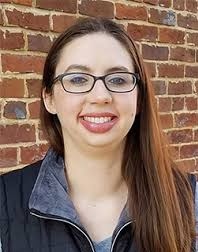
For the majority of the human past, our ancestors did not leave behind a written record. We will never be able to meet these people of the past, so how do we learn about them? Archaeology, which is the study of the human past, allows us to access the lifeways and experiences of those people through the study of their material culture and landscapes. One way we learn about people through the things they left behind is by adapting scientific techniques and methods to the holistic study of what it is to be human. Here in Kentucky, we borrow from many different fields of study including biology, botany, physics, chemistry, and soil science. In this talk, I will give some examples of how observations using remote sensing, microscopy, chemical analysis, and other scientific data collection and analysis techniques tell us about the people that have lived here in the Commonwealth for over 12,000 years.
"Exploring the technical heritage of the Irish Late Bronze Age socketed axe"
Terry Runner, Kentucky Science Center
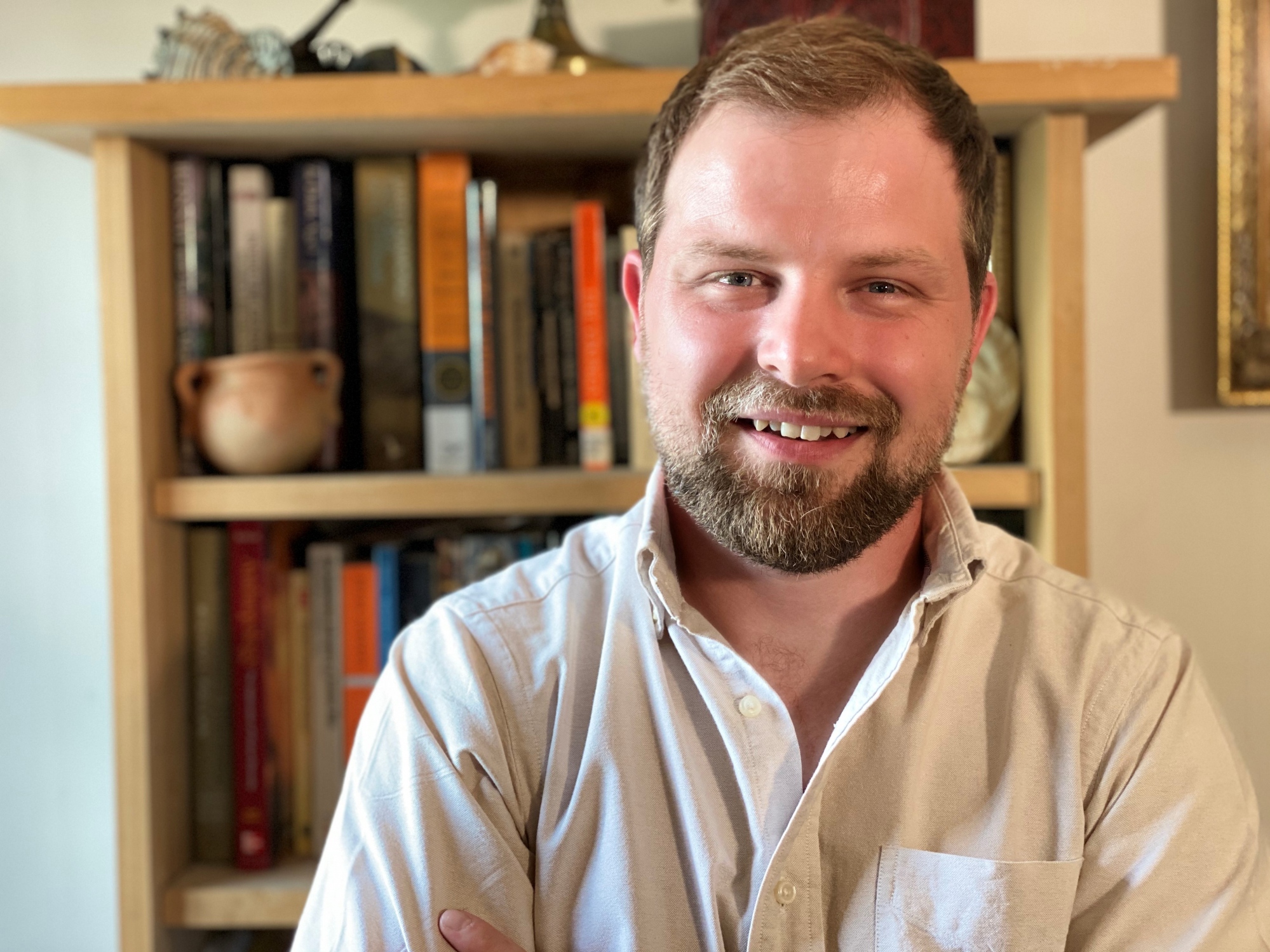 In studying the past, archaeologists often tackle the how and why surrounding objects people left behind. These objects allow us to create a narrative of past culture and society that help us understand the birth, life and death of people in the past. Over the last few decades, the use of experiment in archaeological research has gained popularity as a means to test hypotheses surrounding human material culture. In my 2018 Master’s thesis, I used an experimental method to understand a phenomenon occurring inside Irish Late Bronze Age socketed axes. This feature, commonly known as a ‘halfting rib’ may indicate a step in the casting process that is today little understood. With nearly two centuries of archaeological evidence surrounding socketed axes, I reconstructed the socketed axe casting techniques in Ireland to get a better sense of how Bronze Age casters made these tools, and how this rib played a roll in that process.
In studying the past, archaeologists often tackle the how and why surrounding objects people left behind. These objects allow us to create a narrative of past culture and society that help us understand the birth, life and death of people in the past. Over the last few decades, the use of experiment in archaeological research has gained popularity as a means to test hypotheses surrounding human material culture. In my 2018 Master’s thesis, I used an experimental method to understand a phenomenon occurring inside Irish Late Bronze Age socketed axes. This feature, commonly known as a ‘halfting rib’ may indicate a step in the casting process that is today little understood. With nearly two centuries of archaeological evidence surrounding socketed axes, I reconstructed the socketed axe casting techniques in Ireland to get a better sense of how Bronze Age casters made these tools, and how this rib played a roll in that process.
Register Now
Karen Stevens, University of Kentucky

For the majority of the human past, our ancestors did not leave behind a written record. We will never be able to meet these people of the past, so how do we learn about them? Archaeology, which is the study of the human past, allows us to access the lifeways and experiences of those people through the study of their material culture and landscapes. One way we learn about people through the things they left behind is by adapting scientific techniques and methods to the holistic study of what it is to be human. Here in Kentucky, we borrow from many different fields of study including biology, botany, physics, chemistry, and soil science. In this talk, I will give some examples of how observations using remote sensing, microscopy, chemical analysis, and other scientific data collection and analysis techniques tell us about the people that have lived here in the Commonwealth for over 12,000 years.
"Exploring the technical heritage of the Irish Late Bronze Age socketed axe"
Terry Runner, Kentucky Science Center
 In studying the past, archaeologists often tackle the how and why surrounding objects people left behind. These objects allow us to create a narrative of past culture and society that help us understand the birth, life and death of people in the past. Over the last few decades, the use of experiment in archaeological research has gained popularity as a means to test hypotheses surrounding human material culture. In my 2018 Master’s thesis, I used an experimental method to understand a phenomenon occurring inside Irish Late Bronze Age socketed axes. This feature, commonly known as a ‘halfting rib’ may indicate a step in the casting process that is today little understood. With nearly two centuries of archaeological evidence surrounding socketed axes, I reconstructed the socketed axe casting techniques in Ireland to get a better sense of how Bronze Age casters made these tools, and how this rib played a roll in that process.
In studying the past, archaeologists often tackle the how and why surrounding objects people left behind. These objects allow us to create a narrative of past culture and society that help us understand the birth, life and death of people in the past. Over the last few decades, the use of experiment in archaeological research has gained popularity as a means to test hypotheses surrounding human material culture. In my 2018 Master’s thesis, I used an experimental method to understand a phenomenon occurring inside Irish Late Bronze Age socketed axes. This feature, commonly known as a ‘halfting rib’ may indicate a step in the casting process that is today little understood. With nearly two centuries of archaeological evidence surrounding socketed axes, I reconstructed the socketed axe casting techniques in Ireland to get a better sense of how Bronze Age casters made these tools, and how this rib played a roll in that process.Register Now
Monday July 13, 7pm EDT Watch the recording (program starts 1 minute 30 seconds in)

Perception & Communication for a Pandemic
How do we use visual and other cues when we communicate with each other? How do we adjust to new norms of communicating through a screens or from behind a mask? Join us for an engaging discussion about the neuroscience & psychology of perception & communication with our speakers this month.
 Naomi Charalambakis, Federation of American Societies for Experimental Biology (FASEB)
Naomi Charalambakis, Federation of American Societies for Experimental Biology (FASEB)What You See is What You Get
Our eyes are an important feature of the visual system. They connect to our brains and, in milliseconds, translate the objects and people we see into things we recognize. How exactly does the brain do this so quickly, and is it affected when our environment changes? As we continue to navigate these interesting times—wearing masks and having virtual meetings—is it possible these interactions affect the wiring of our nervous system? When our sight is impaired, the lack of visual information from mouth movements can impact other senses such as hearing, but how does this work? To answer these questions, we will explore the neuroscience behind how visual information is transmitted and examine the area and characteristics of the brain regions specifically responsible for recognizing faces. Naomi recently earned her PhD at the University of Louisville.
Listen to Naomi's presentation on the Bench Talk podcast
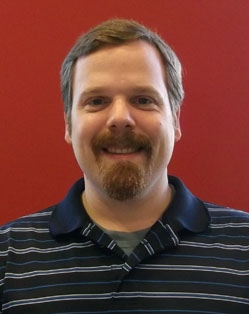 Andy Mienaltowski, Western Kentucky University
Andy Mienaltowski, Western Kentucky UniversityThe Eyes Have It – Anticipating Difficulty in Facial Emotion Cue Perception
See the Slide show here
Interpreting body cues, especially facial cues, is important to understanding the emotions that others experience. Today's environment poses some interesting challenges for us as we navigate social interaction wearing masks or as we interact with one another as perceptually smaller beings on screens. Visual emotion cues from the lower half of the face are hidden, potentially reducing our ability to anticipate others' emotional status. Older interaction partners may also cope with unique challenges given age-normative changes in facial scanning patterns and in facial cue confusion. The role that facial cues play in emotion recognition across adulthood will be discussed, as well as the impact that blocking these cues may have on social interaction.
Tuesday June 2 Watch the Recording
Healthy at Home: New Visions for the Spaces We Live in
Seyed Allameh, Northern Kentucky University

Digital Homes: Manufacturing Futuristic Structures
See the Slide show here
Imagine your dream home has the shape, functionality, and orientation dictated only by your imagination. Freeing creativity and innovation from the constraints of today’s crude construction technology is the promise of tomorrow’s digital construction technology. Step-by-step, digital printing is evolving into a complete set of tools to build homes by robots that will mix and match materials, and perform processing, deposition, positioning, and timing to create works of art. These unique and beautiful structures will be functional in providing comfort, saving energy, reducing waste, recyclability, and sustainability. The know-how, tools, and feasibility of such revolutionary home building technology will be discussed along its implications for building structures on Moon and Mars. (Photo credit dwell.com)
Zeel Maheshwari, Northern Kentucky University
“Green Home” - Home of the Future
 See the Slide show here
See the Slide show hereToday, the trend is to make everything smarter-our homes, offices and even our cars. But a growing number of architects and scientists are recognizing that creating homes must involve more than mere gadgetry. It must be environmentally sustainable that uses energy, water and building materials efficiently. In recent times, the term “green home” has created a buzz among homeowners. One aspect of converting a regular home to “green” home is by employing renewable energy (typically solar panels) to electrify homes. Using green energy can raise a home’s value while reducing its cost of ownership. Additionally, it is a great way to contribute towards a better future for the community and ultimately to all life on Earth. Green home makes a positive contribution to the environment or at least has a minimal negative impact. The home of the future is not just smarter, its greener!
Are you interested in presenting your research for Bench Talk Live? Let us know! We're looking for undergraduate, graduate, or professional scientists to share their work with a general audience!
